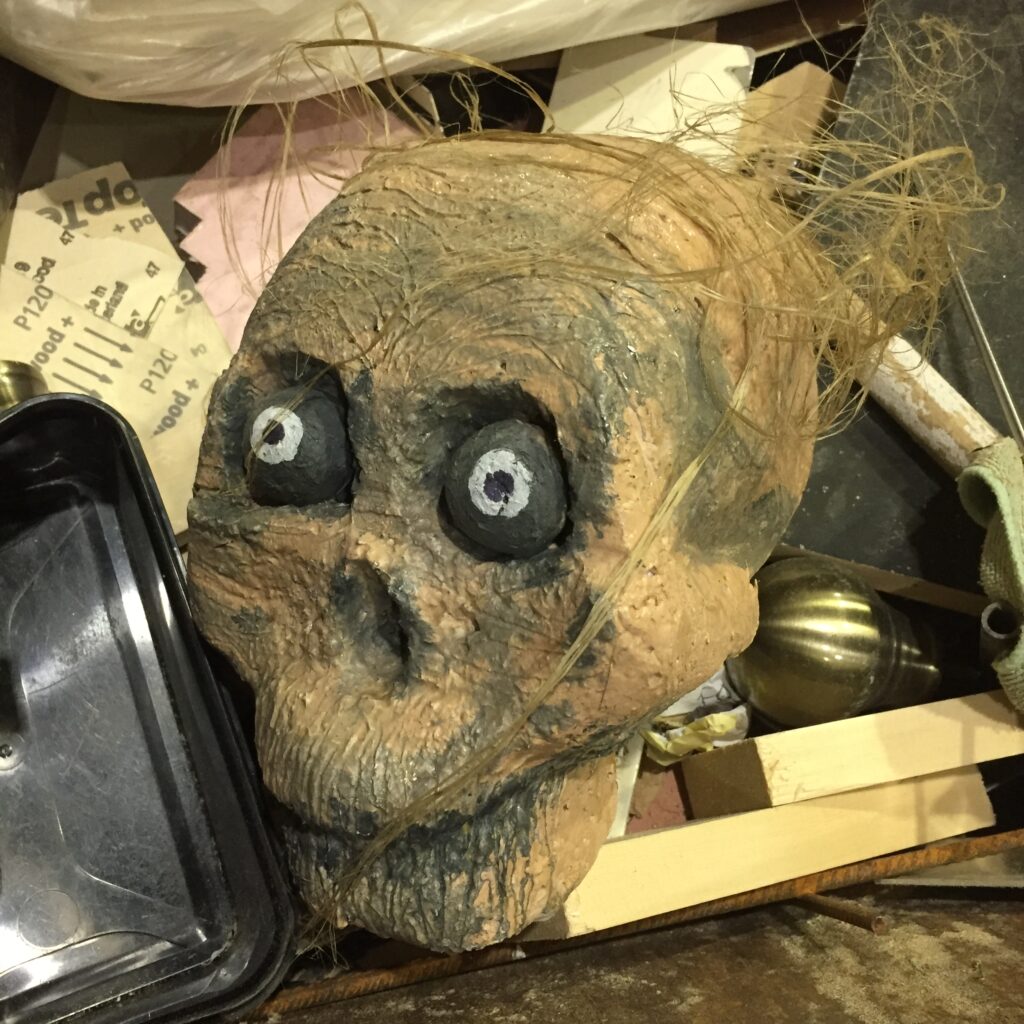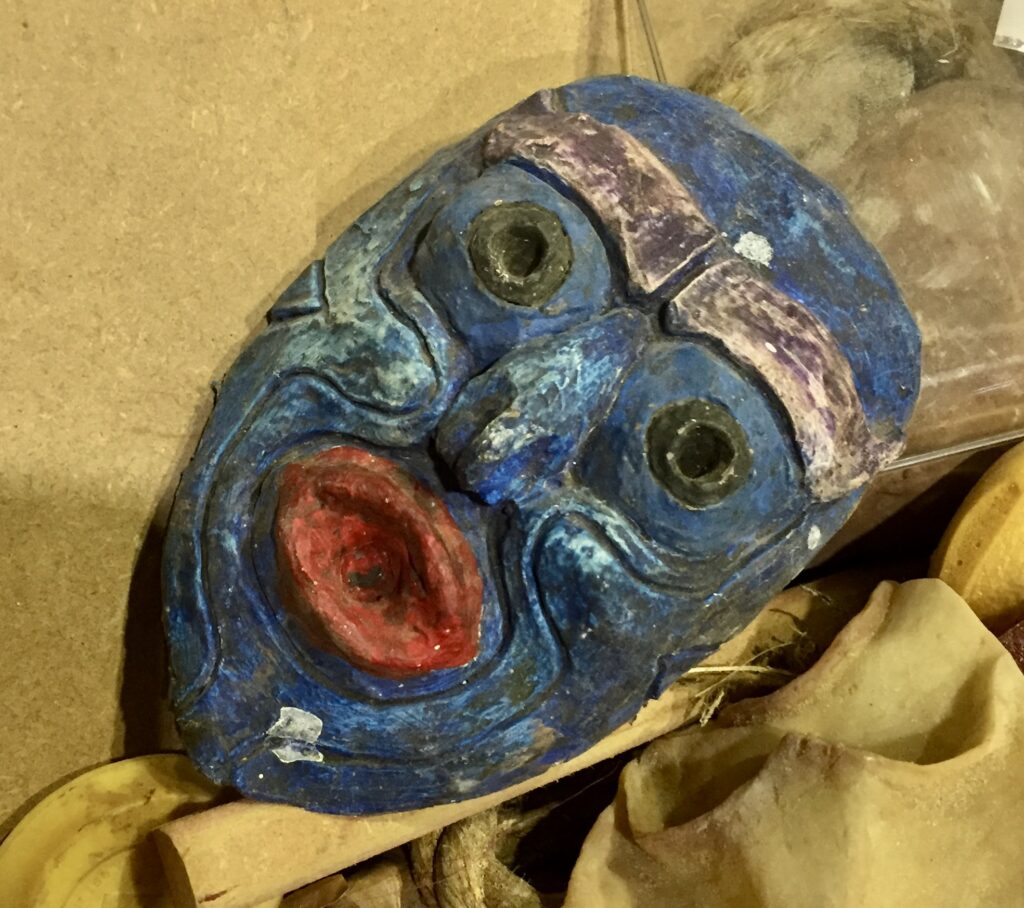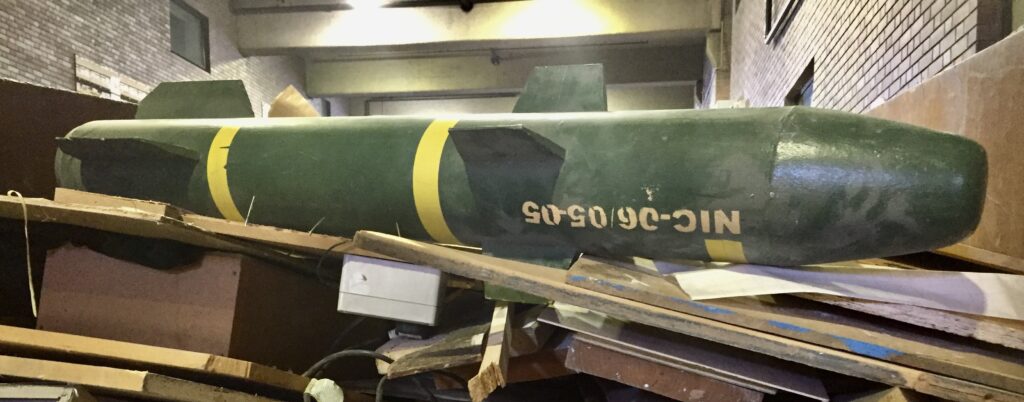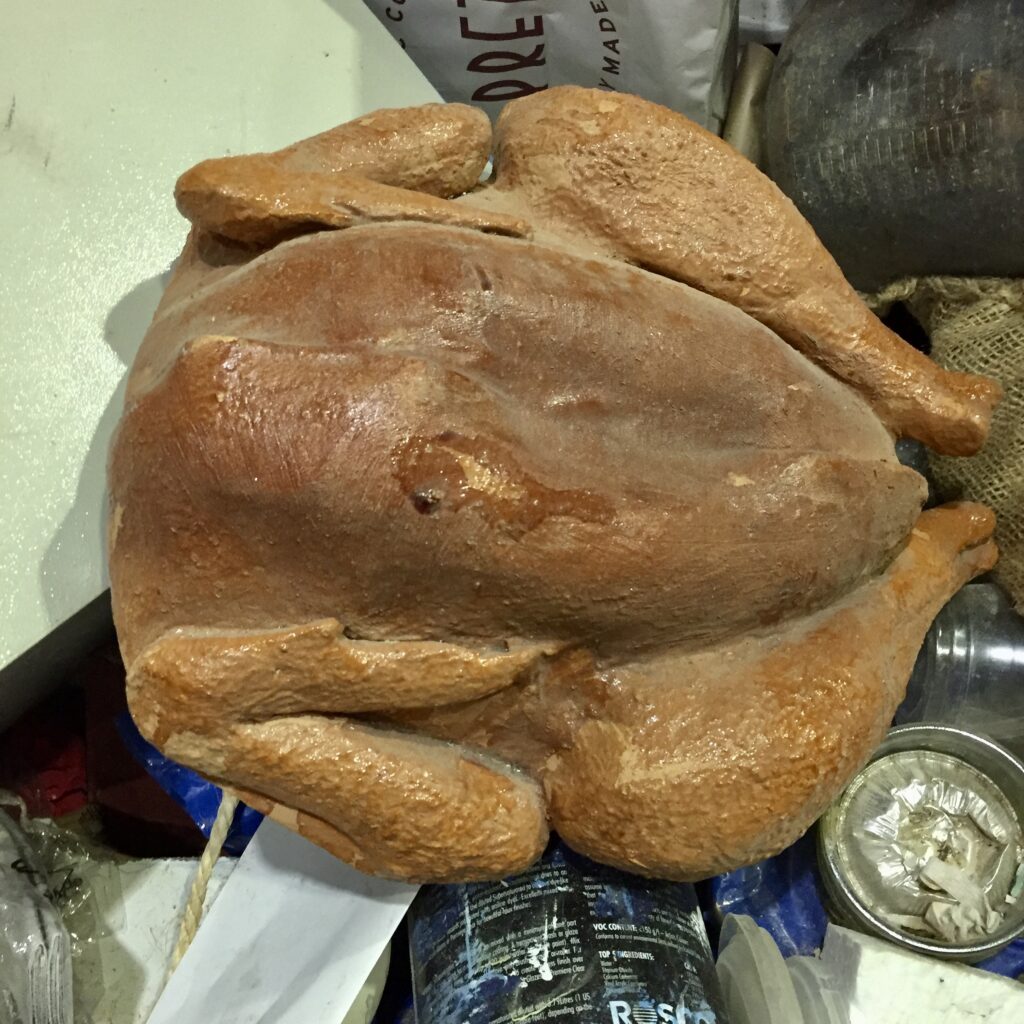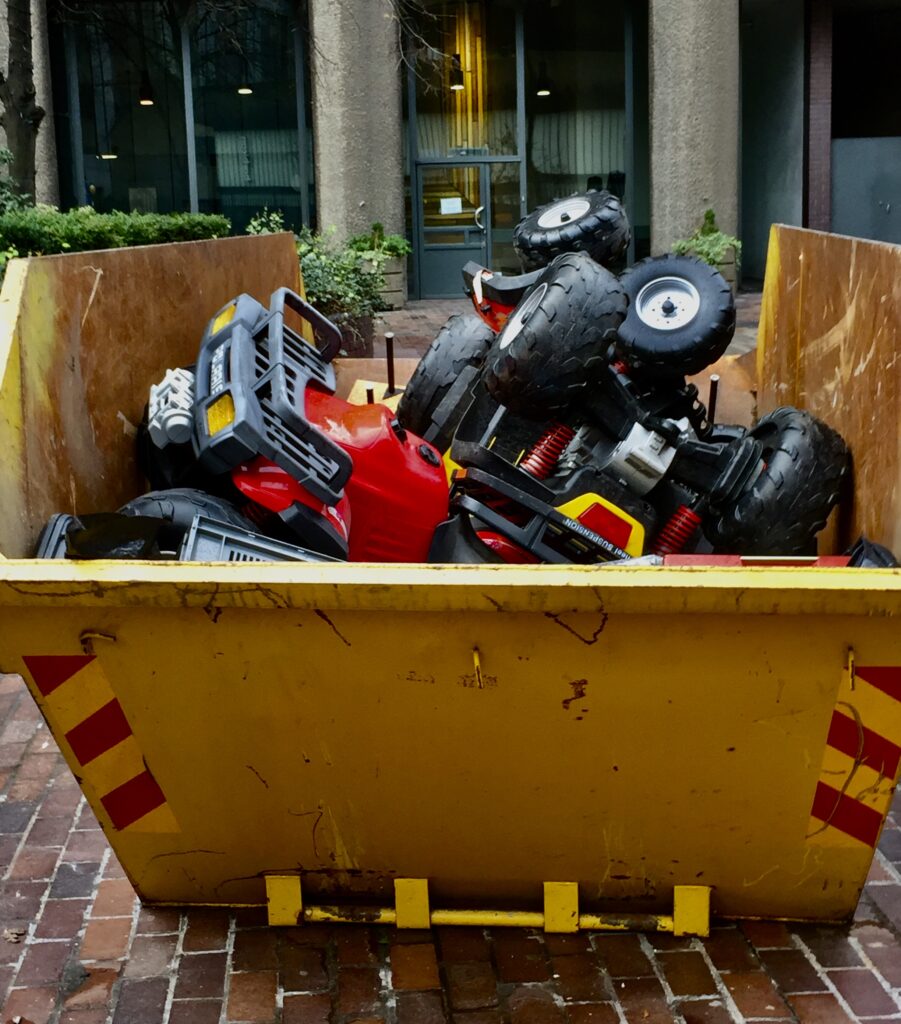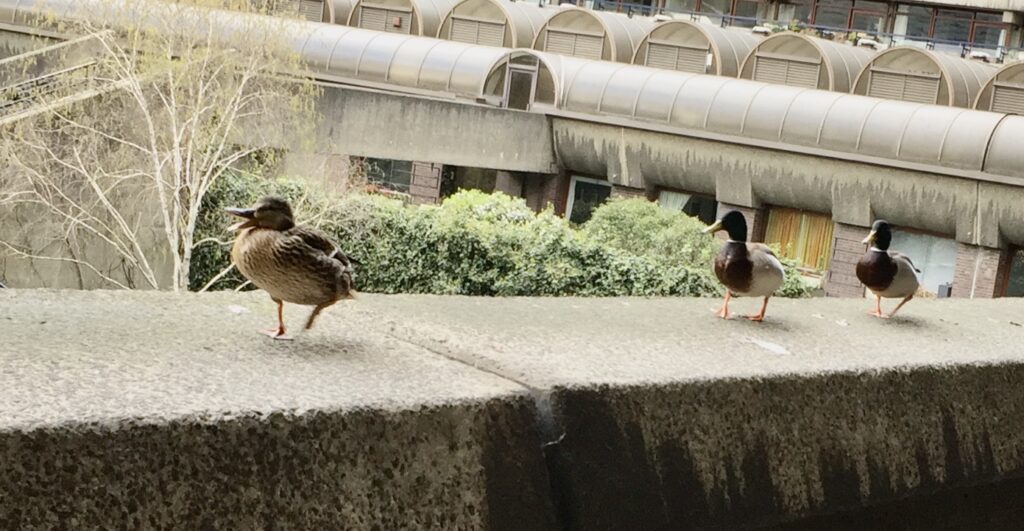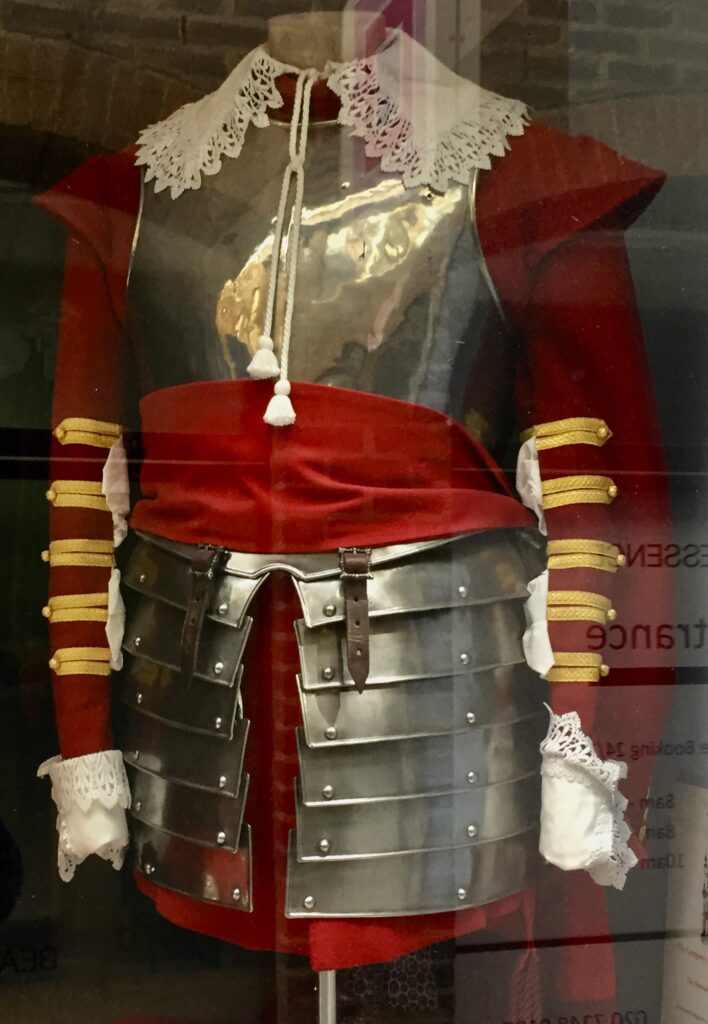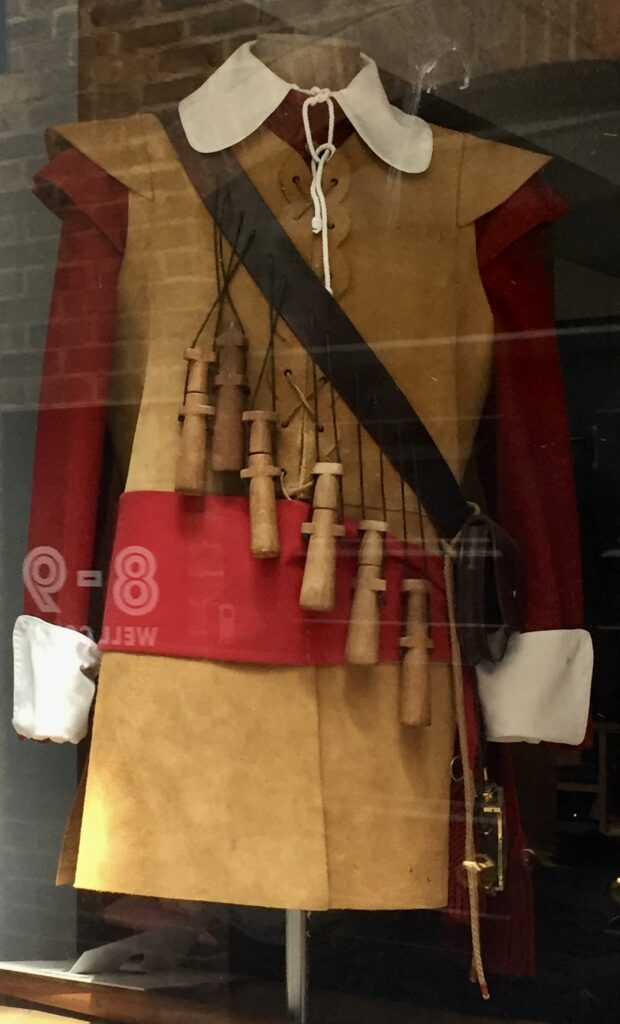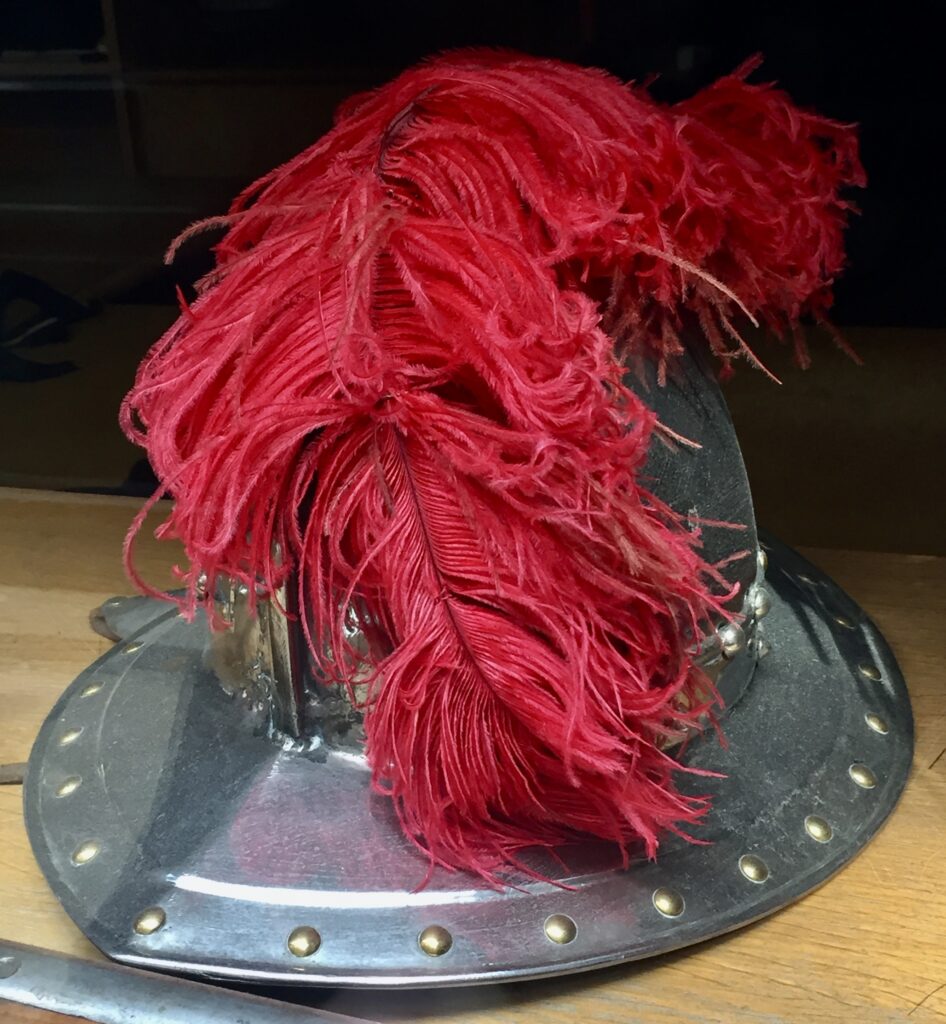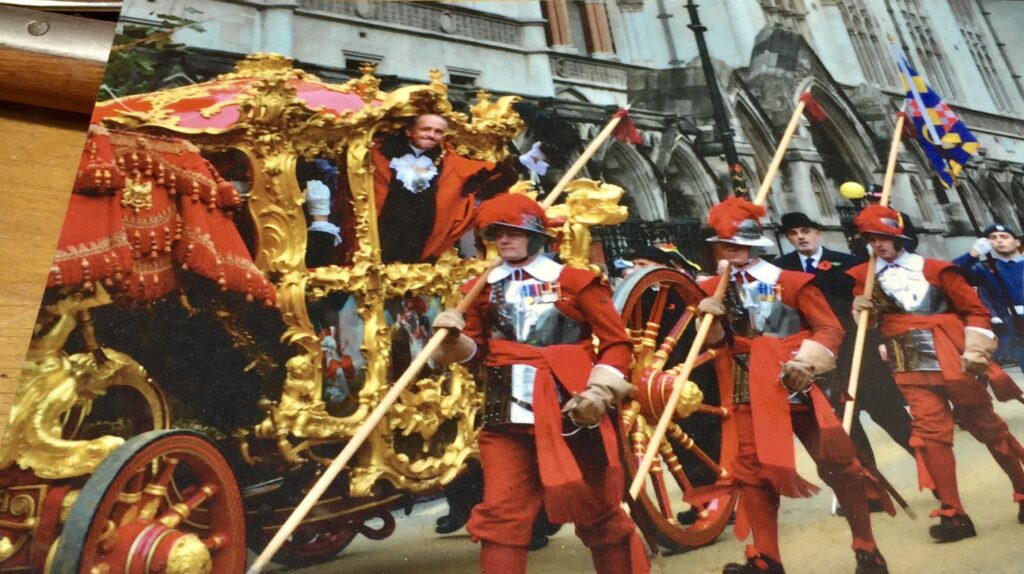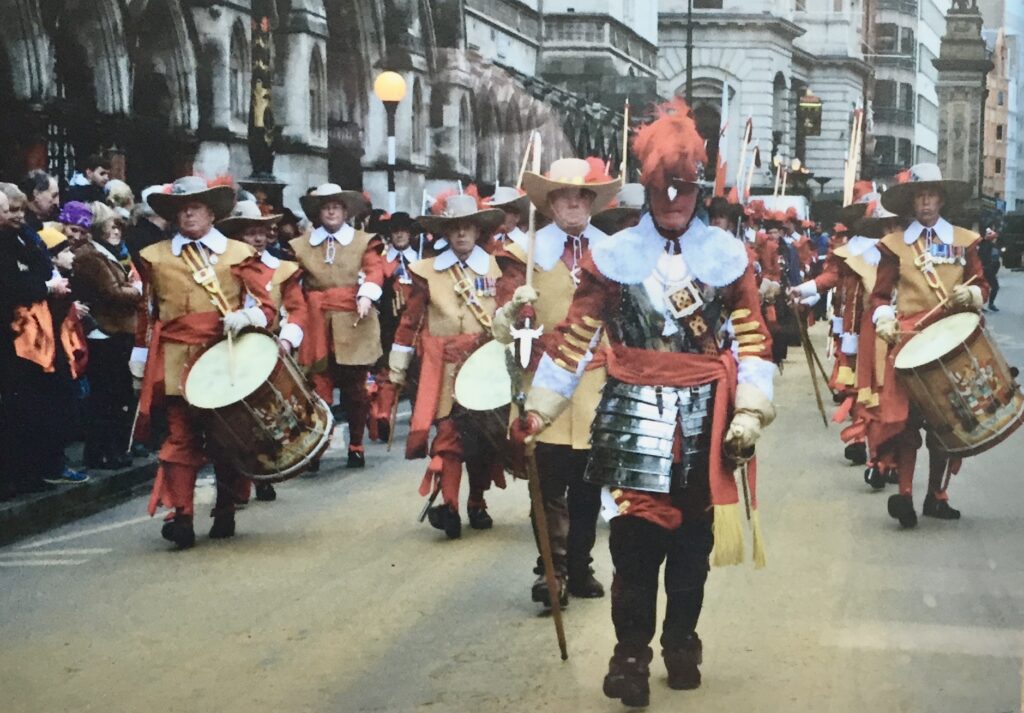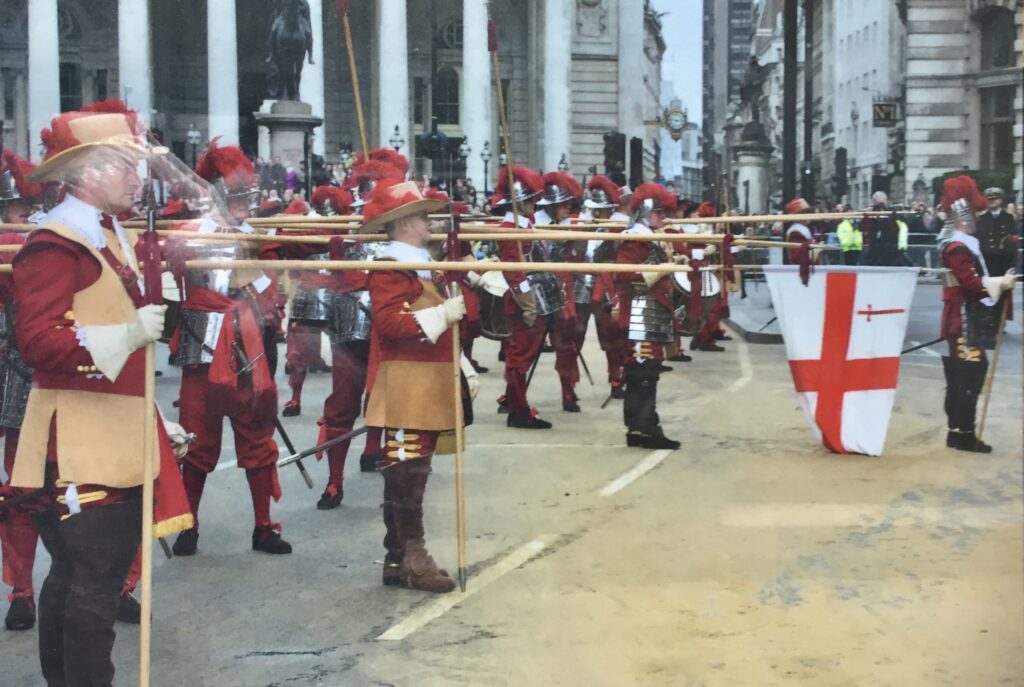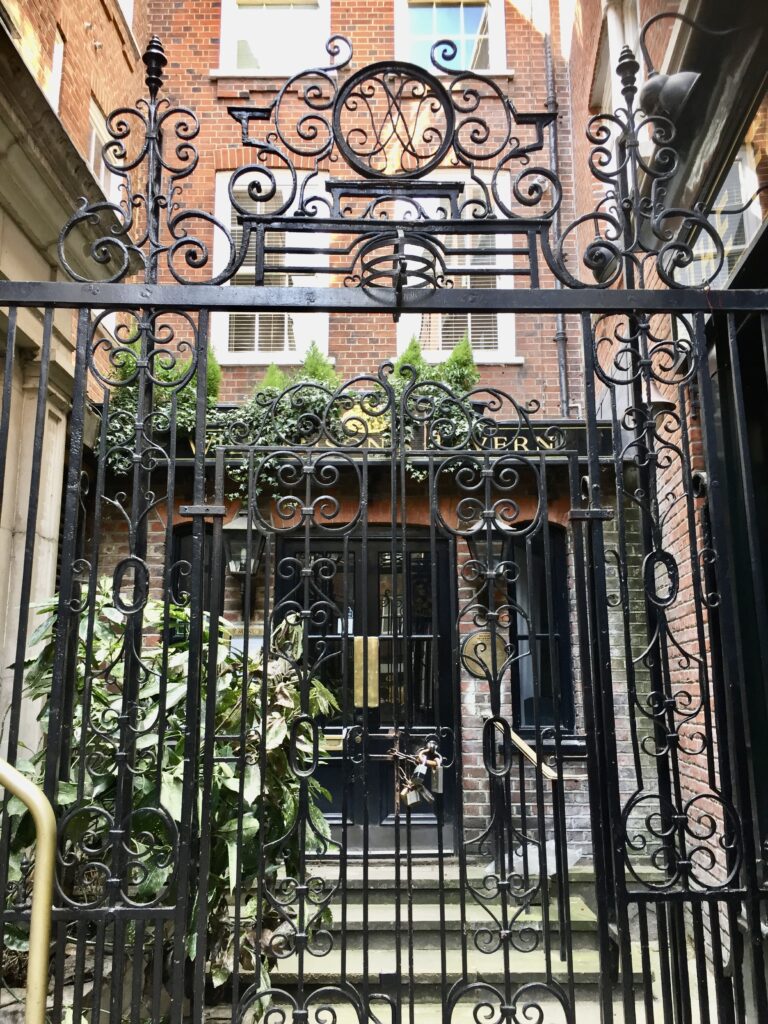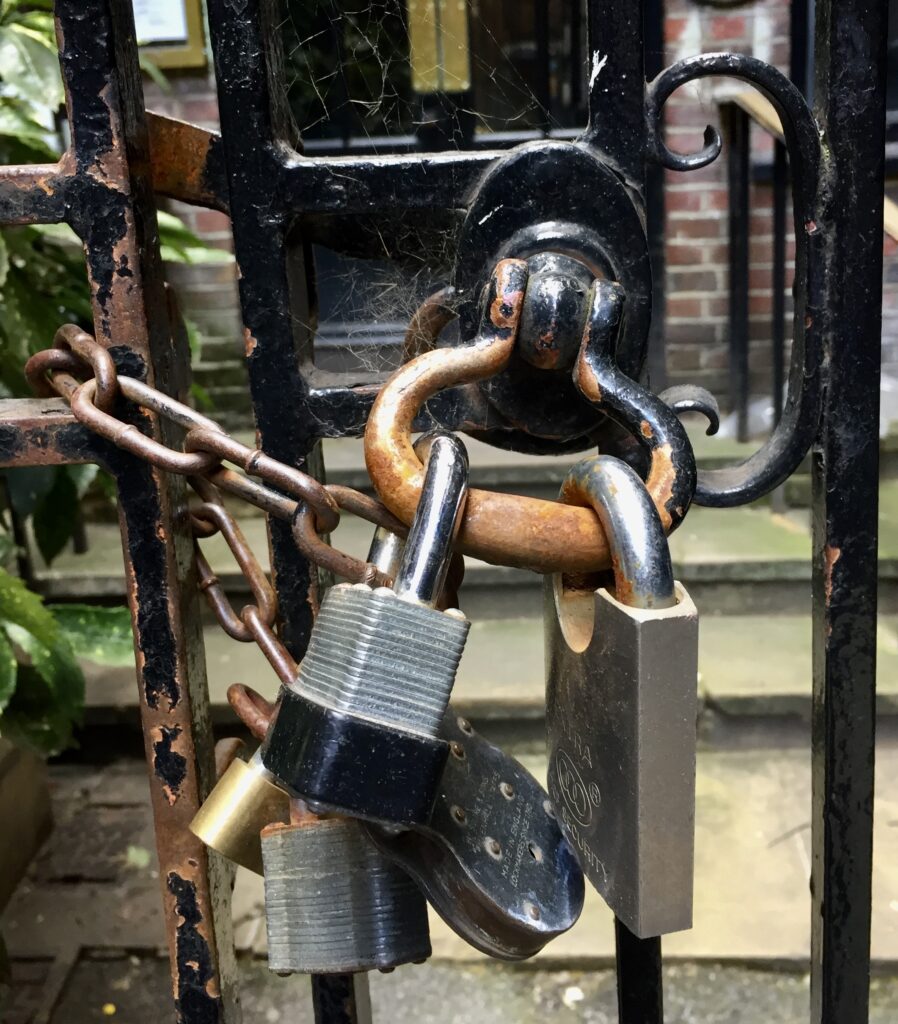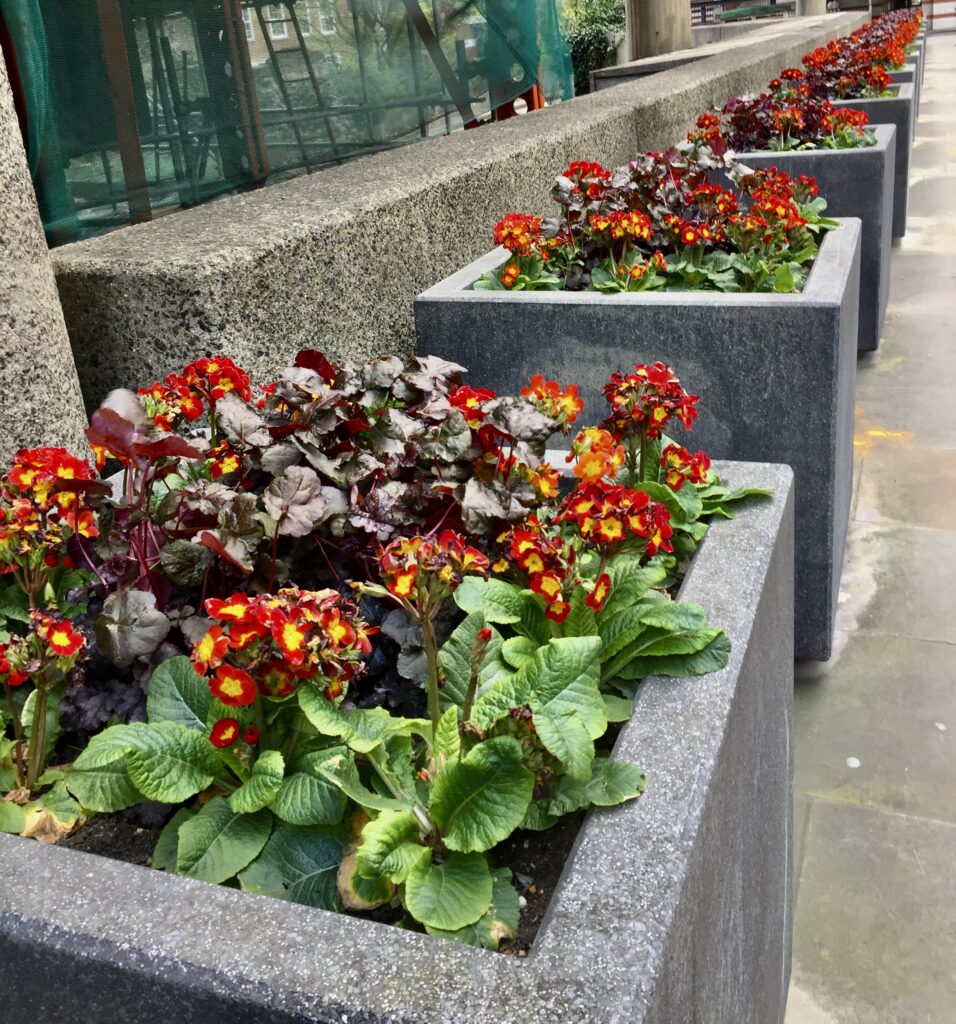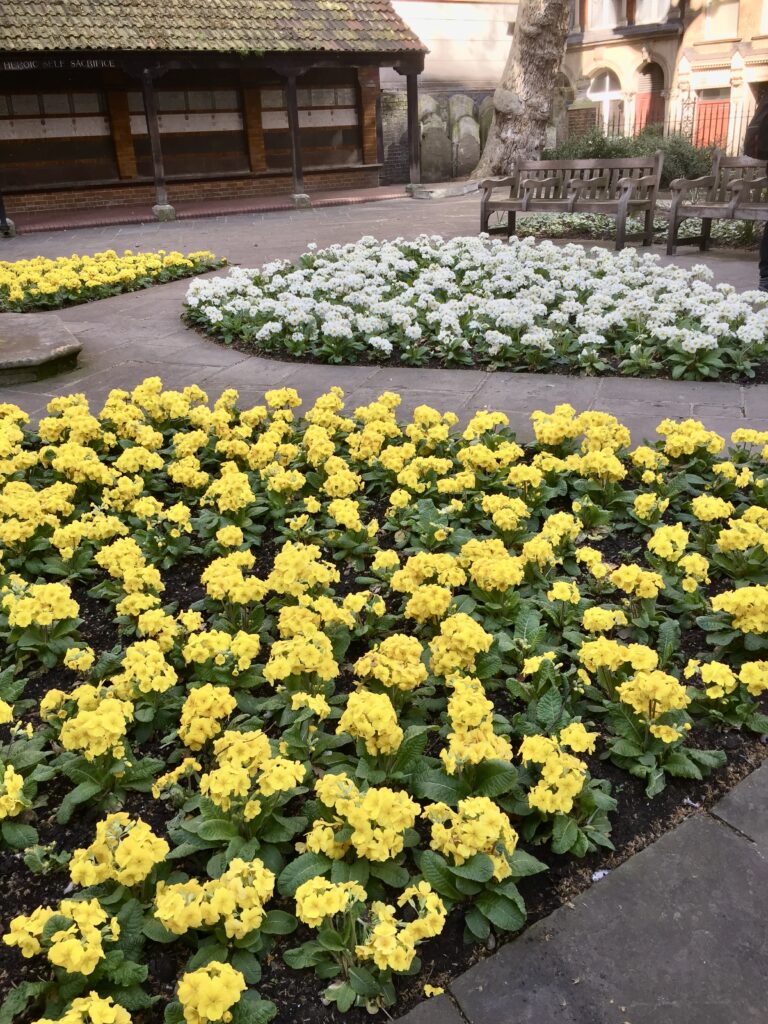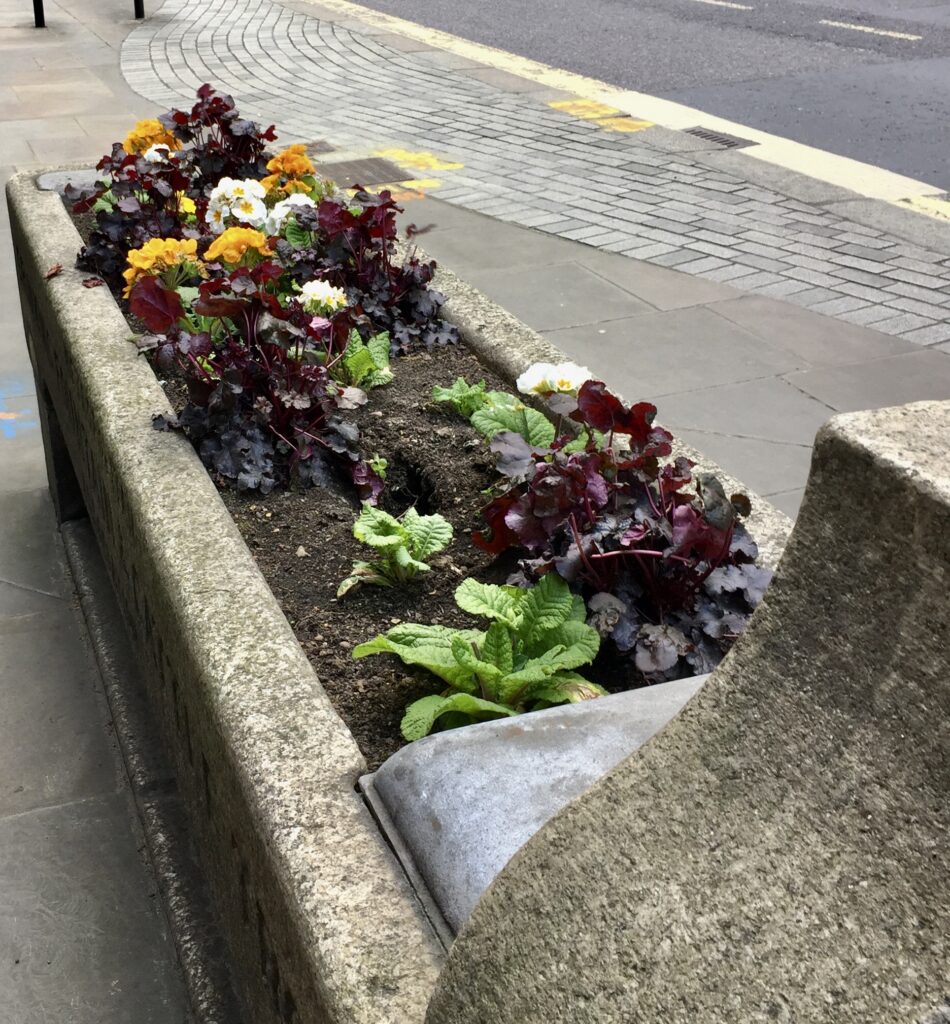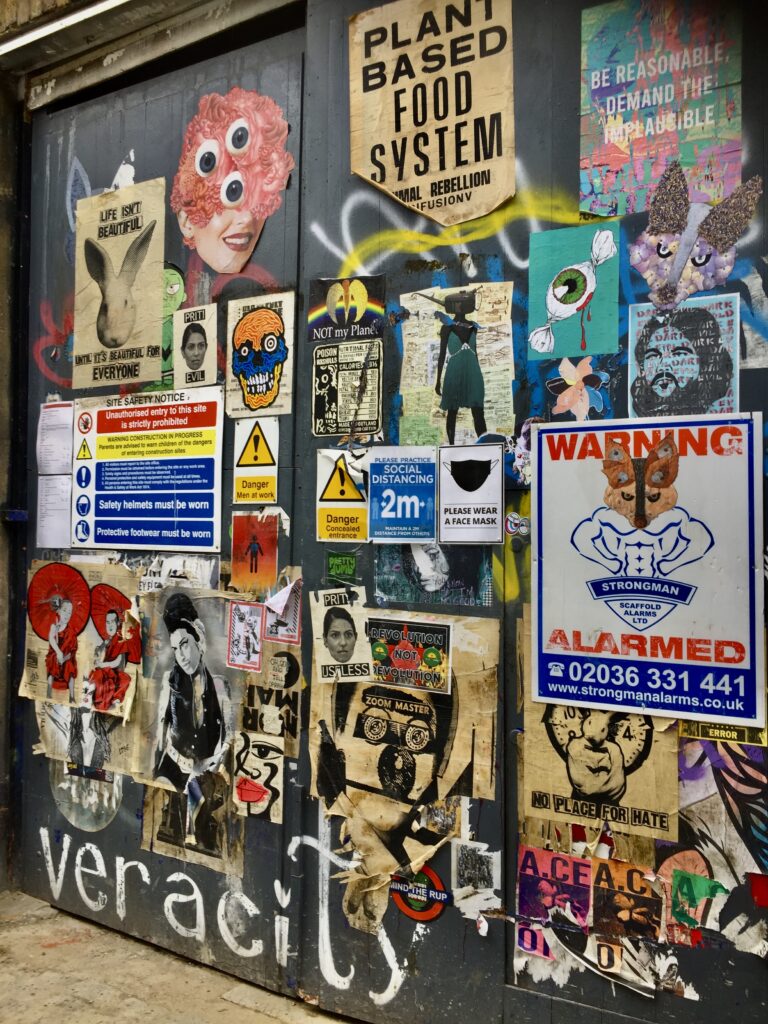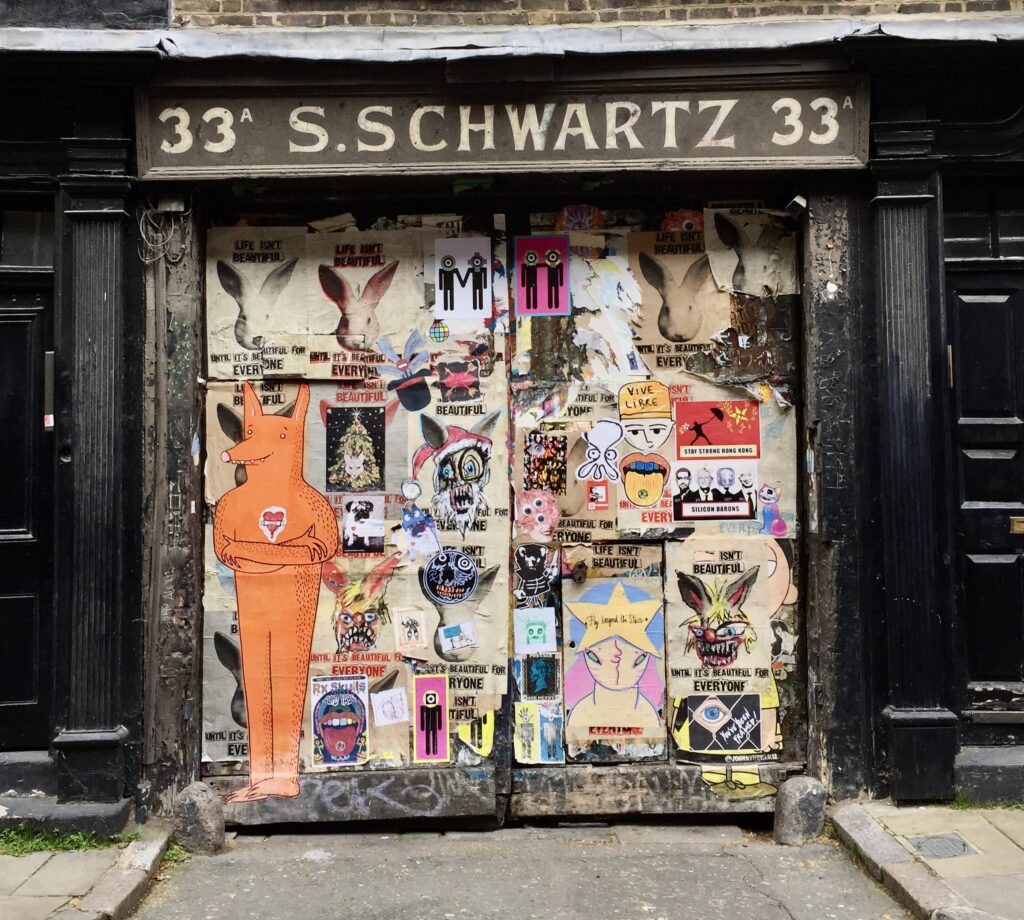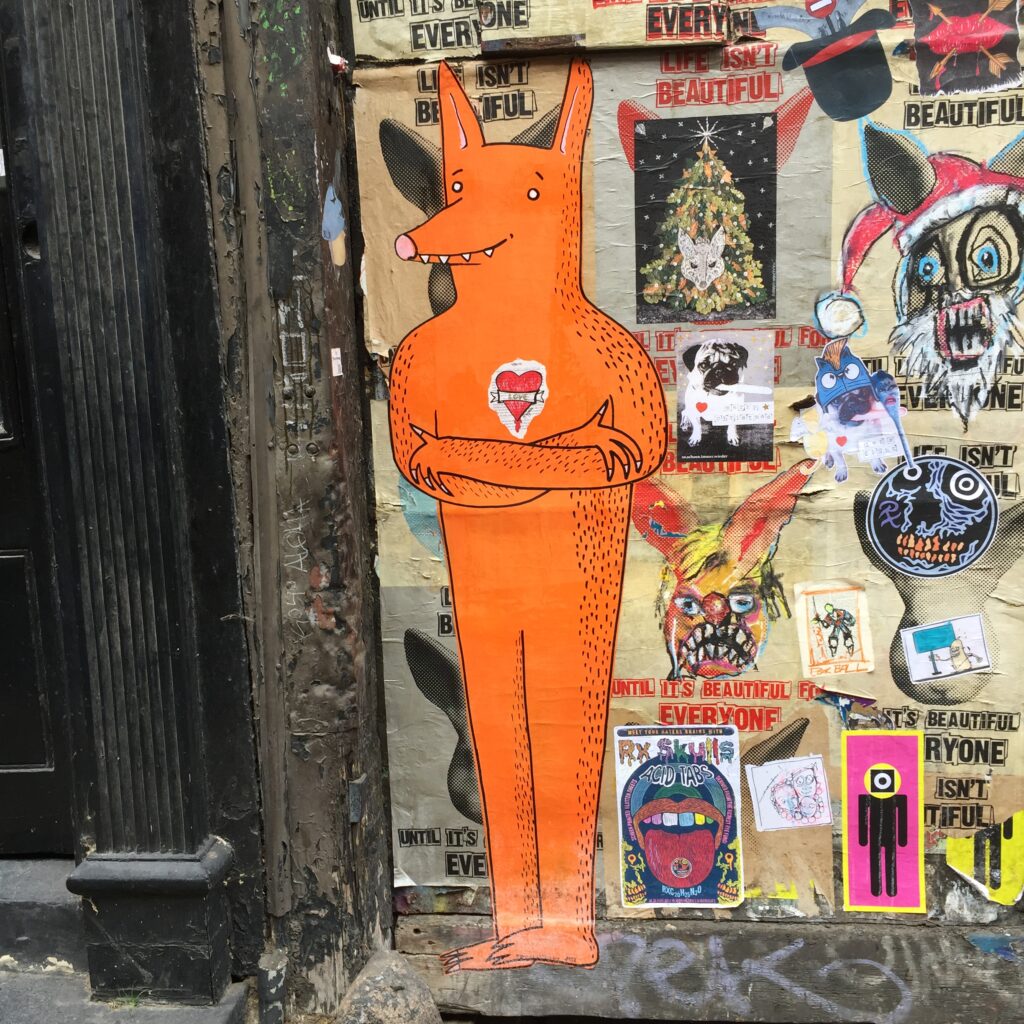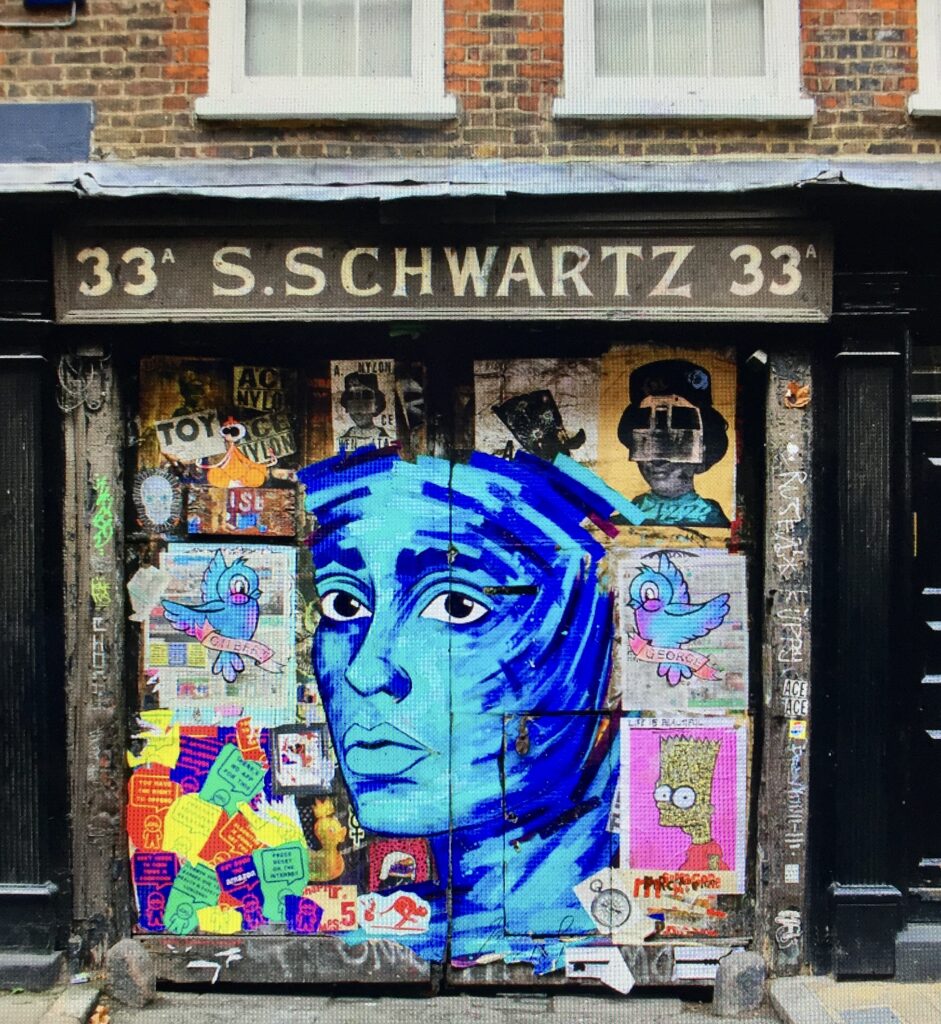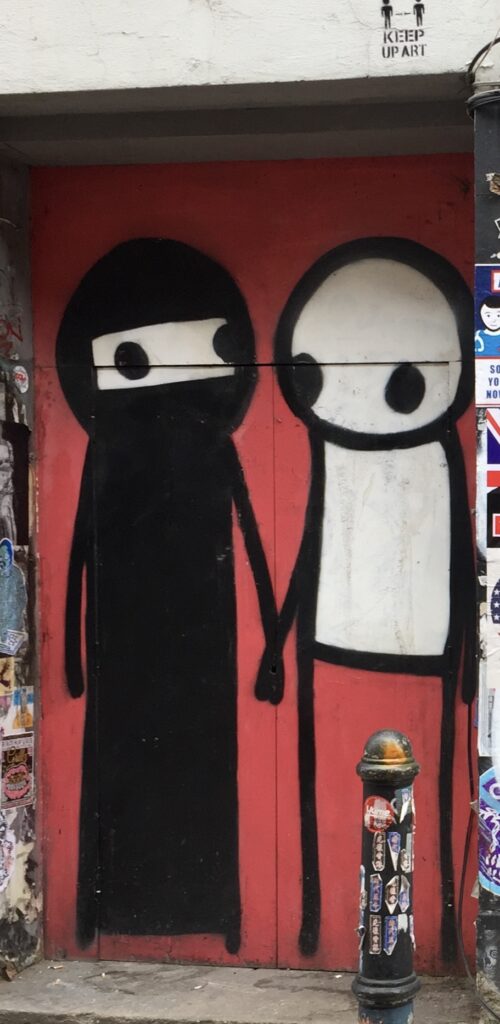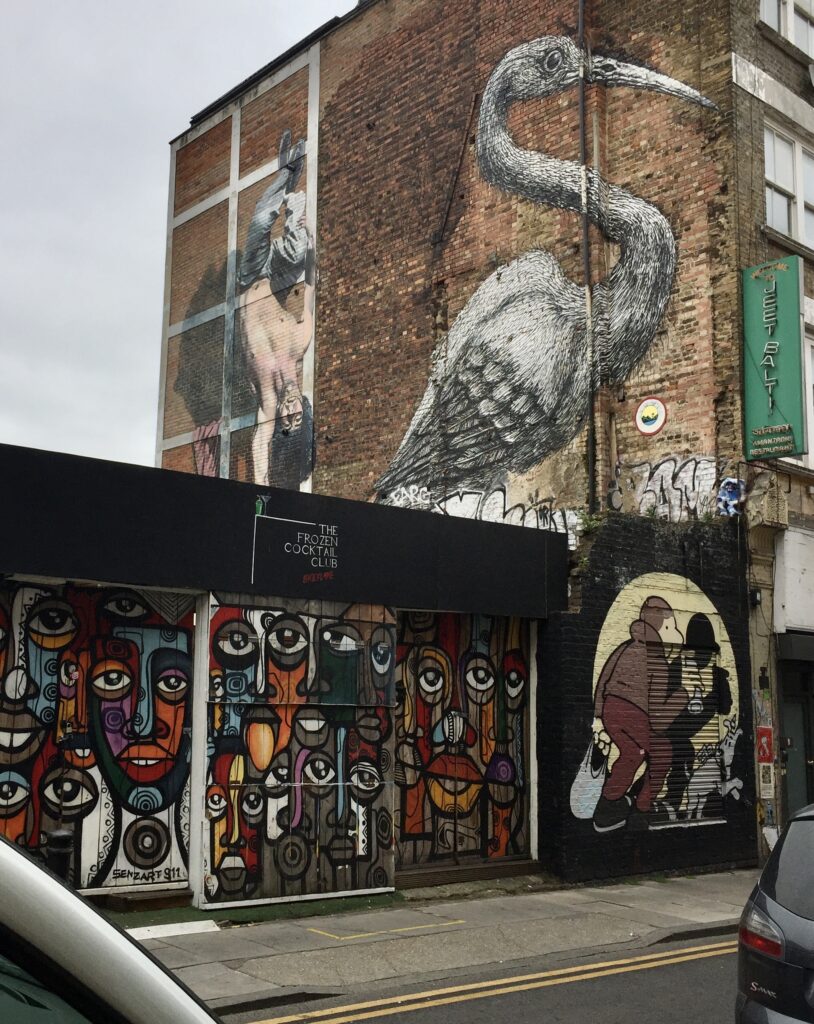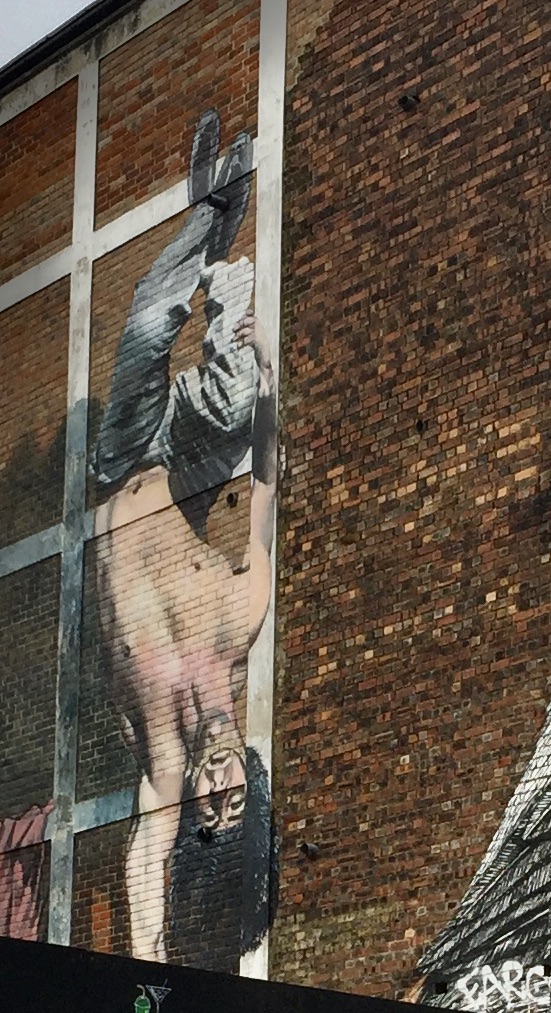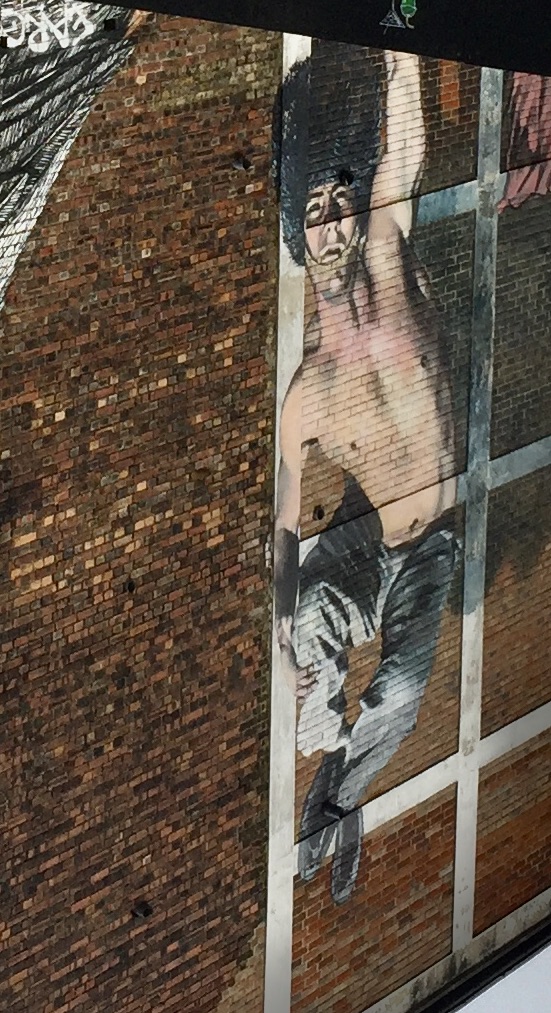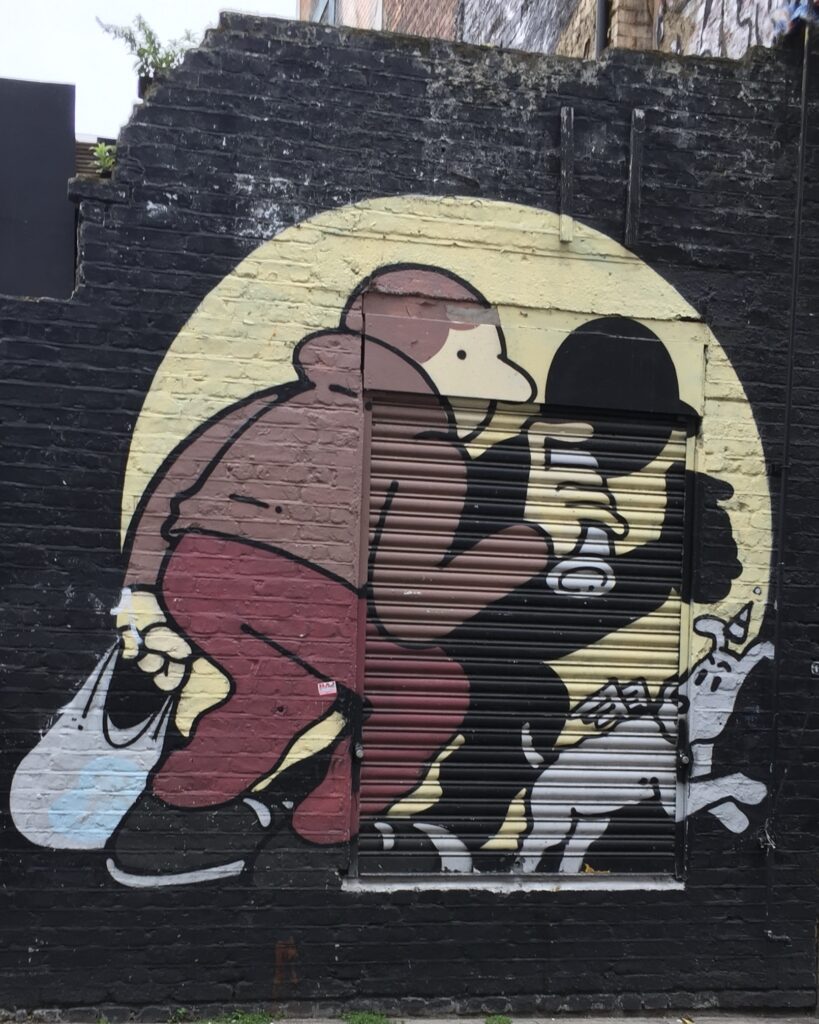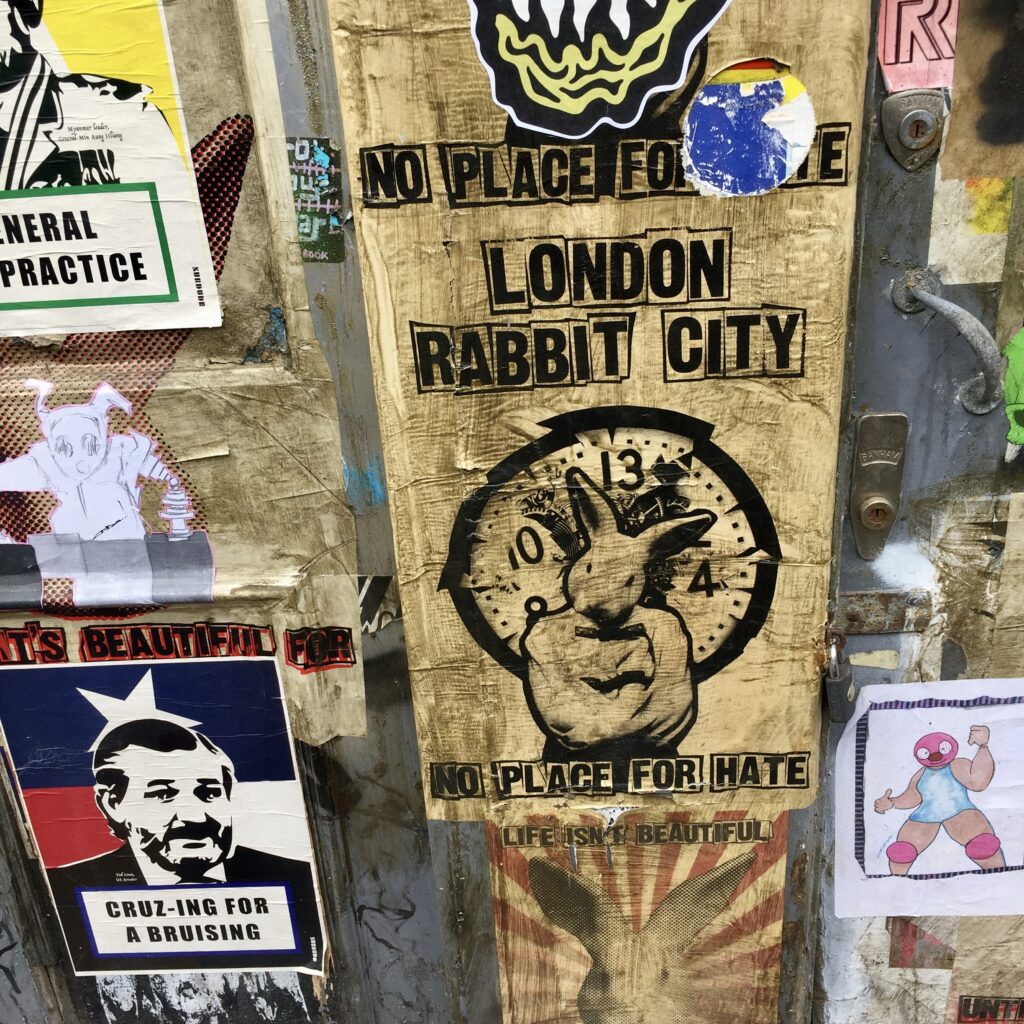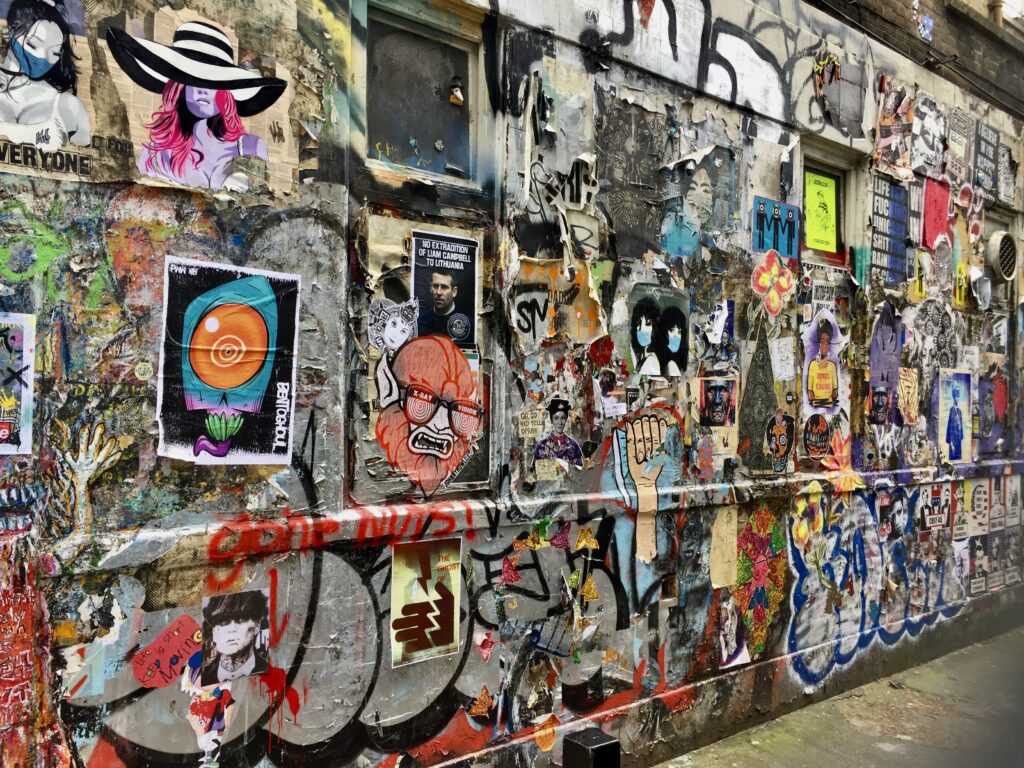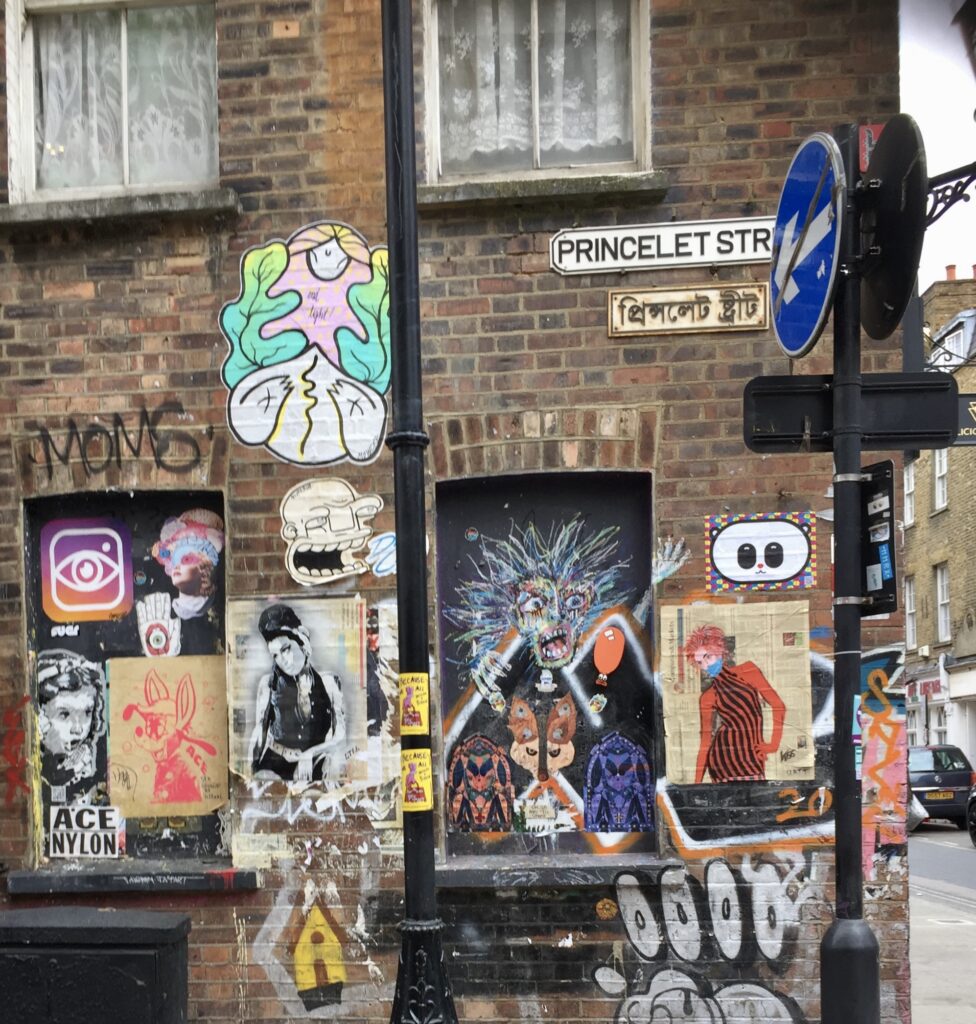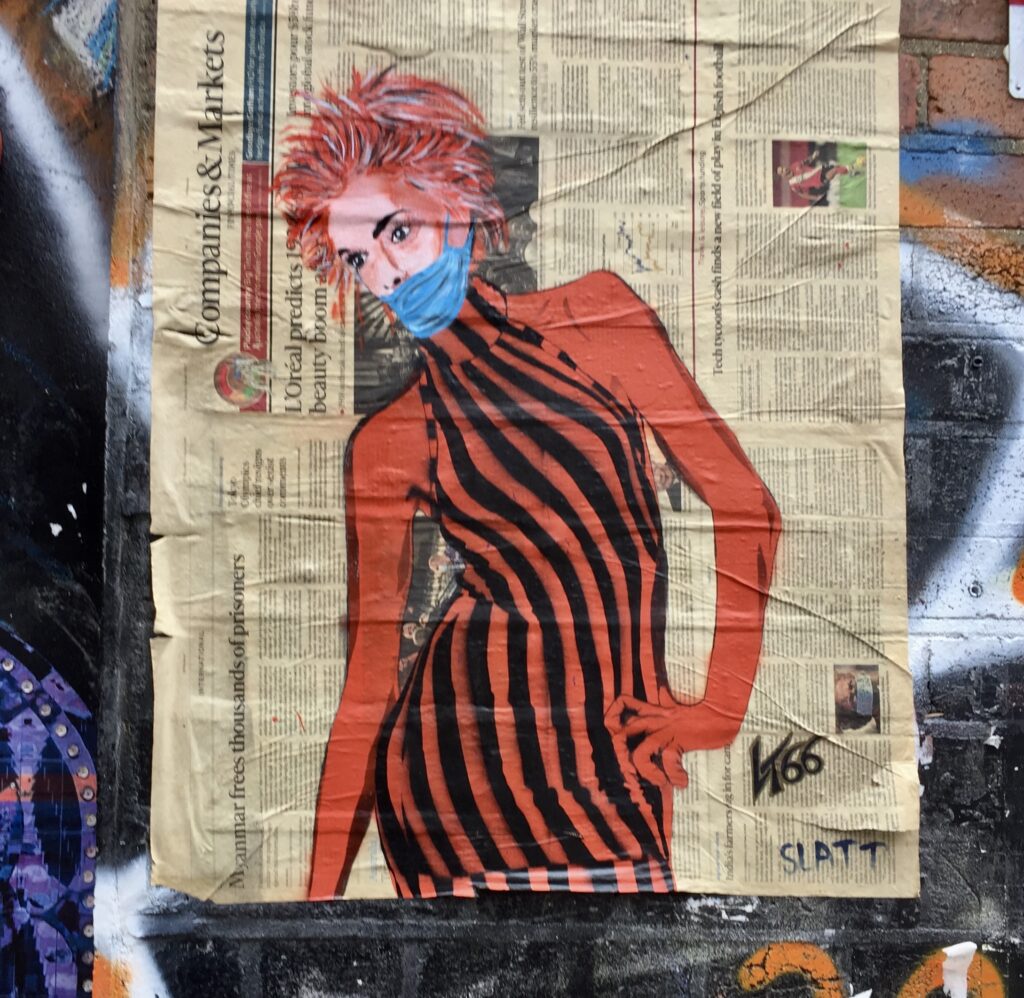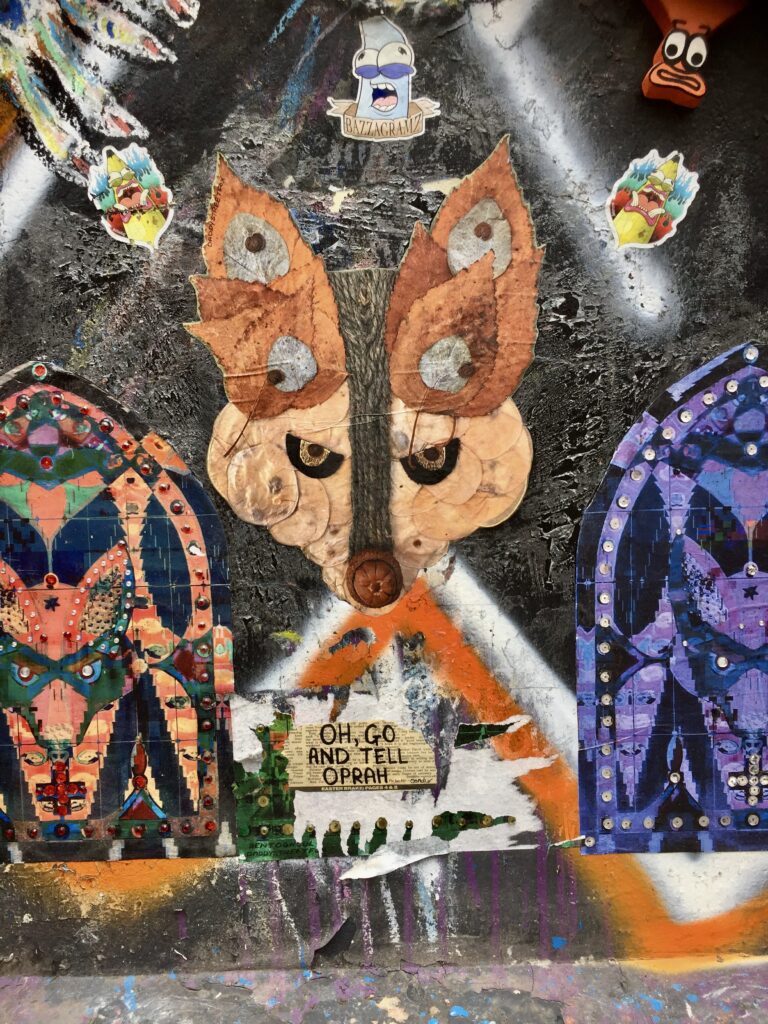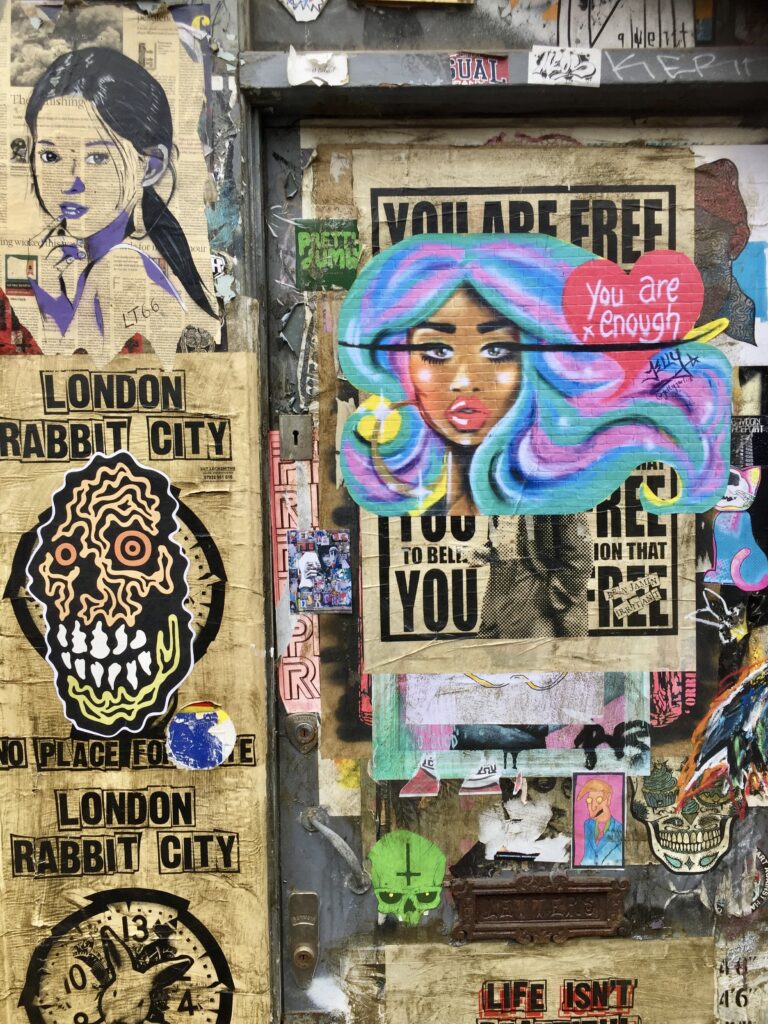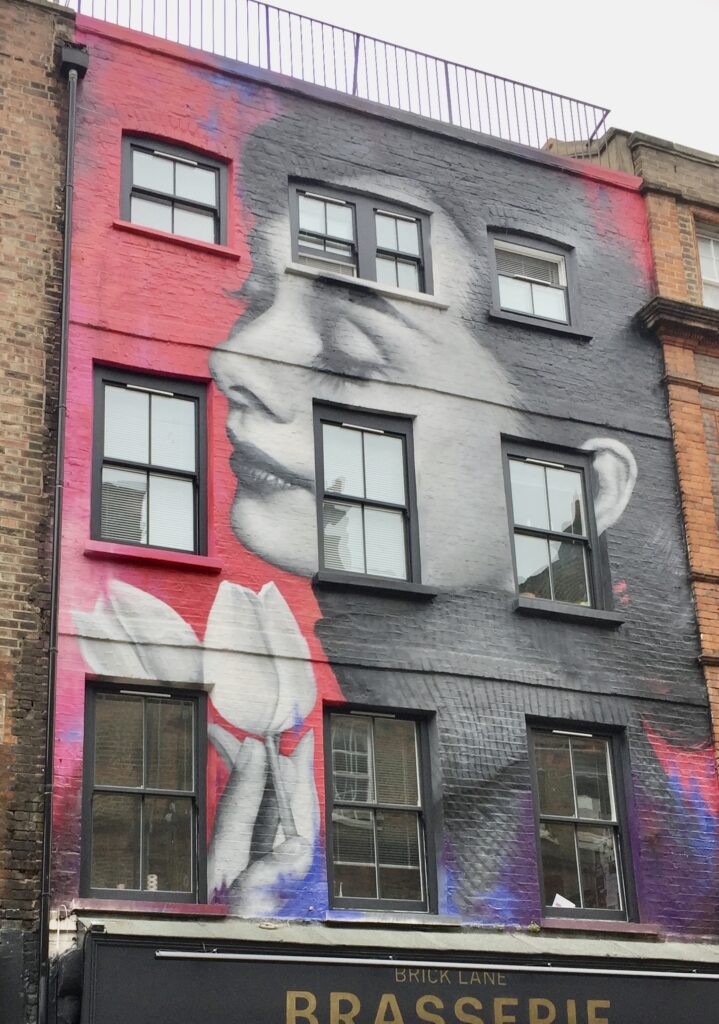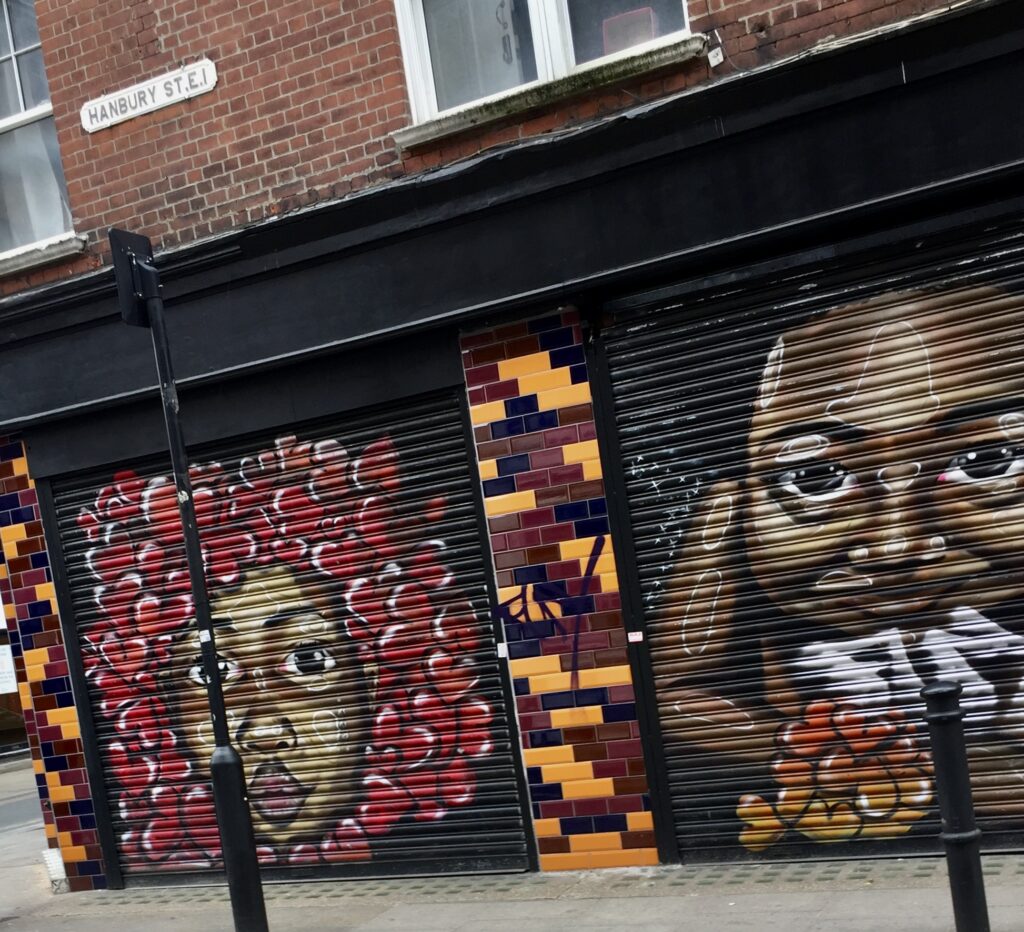I must admit I thought I’d visited all the City gardens but I was wrong and had missed one of the most interesting.
In Pancras Lane, just off Queen Street, is the St Pancras Church Garden (EC2R 8JR). I was intrigued straight away by the carving of two devils cooking some poor condemned souls in a pot …
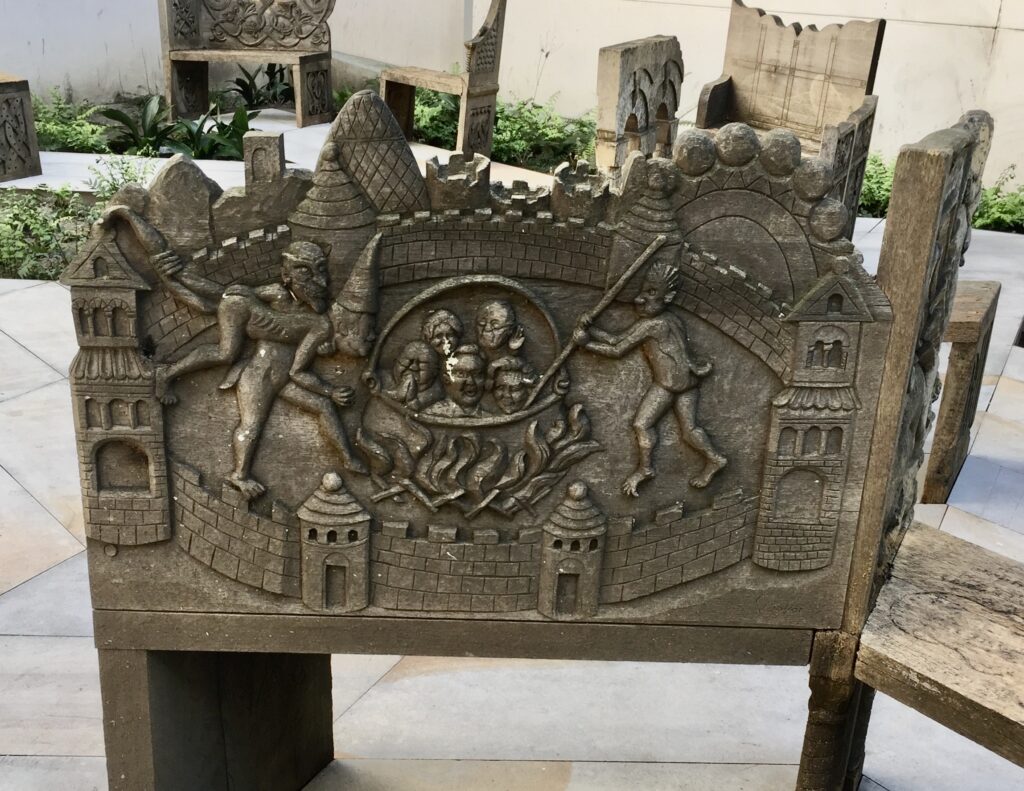
The garden is on the site of St Pancras Church, a late 11th century church destroyed by the Great Fire of London in 1666. The church was never rebuilt, and the site was used first as a burial ground, but then lay basically abandoned until in 2010 the City of London acquired the leasehold of the site in order to turn it into a public garden.
The poetic idea behind the design, by Studio Weave, is that the church has somehow re-emerged, sprouting from the earth in the form of beautifully carved Romanesque wooden benches.
On the right Eve accepts an apple from the serpent – and we know it all turned out badly for her and Adam after that …
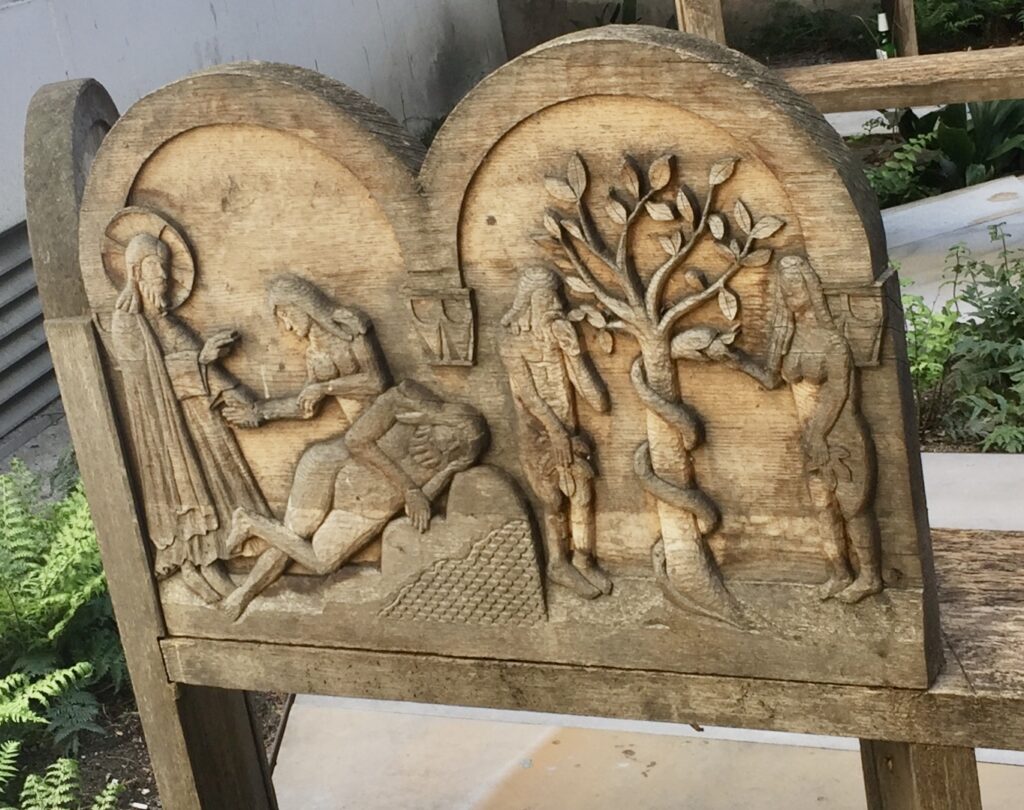
City & Guilds of London Art School was commissioned to produce the benches, which were individually carved during Summer 2011 by a team of tutors and students. The students based the design of the benches on historically referenced Romanesque church carvings …
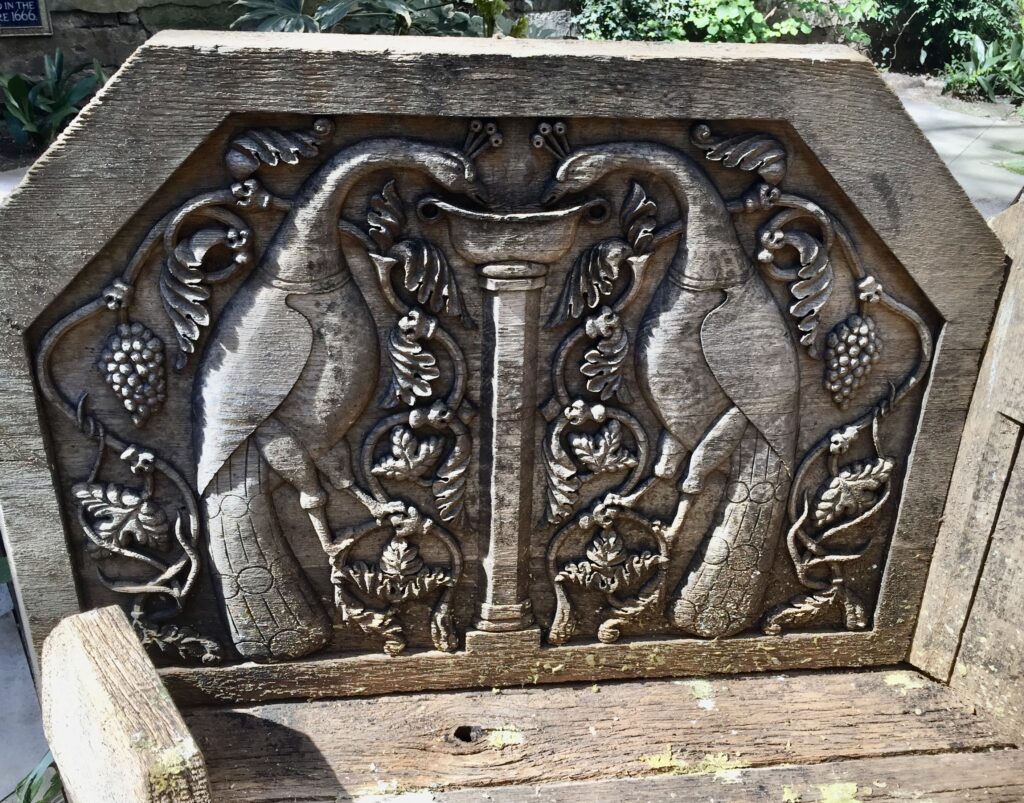
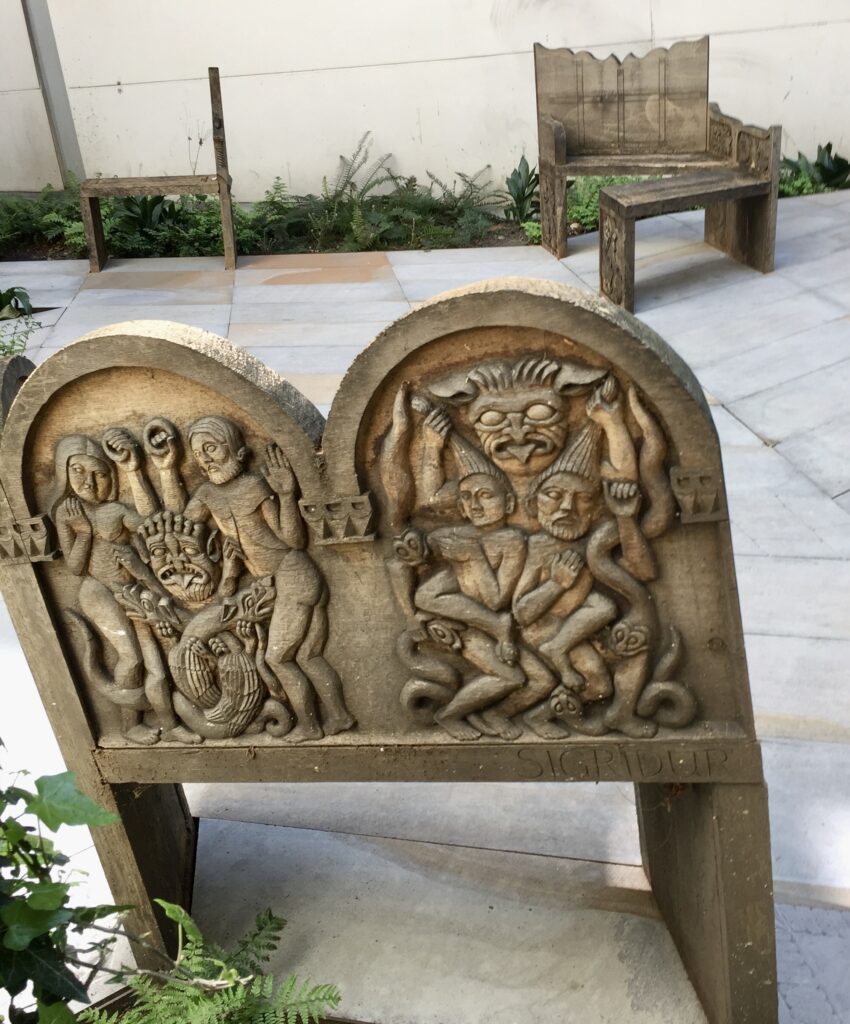
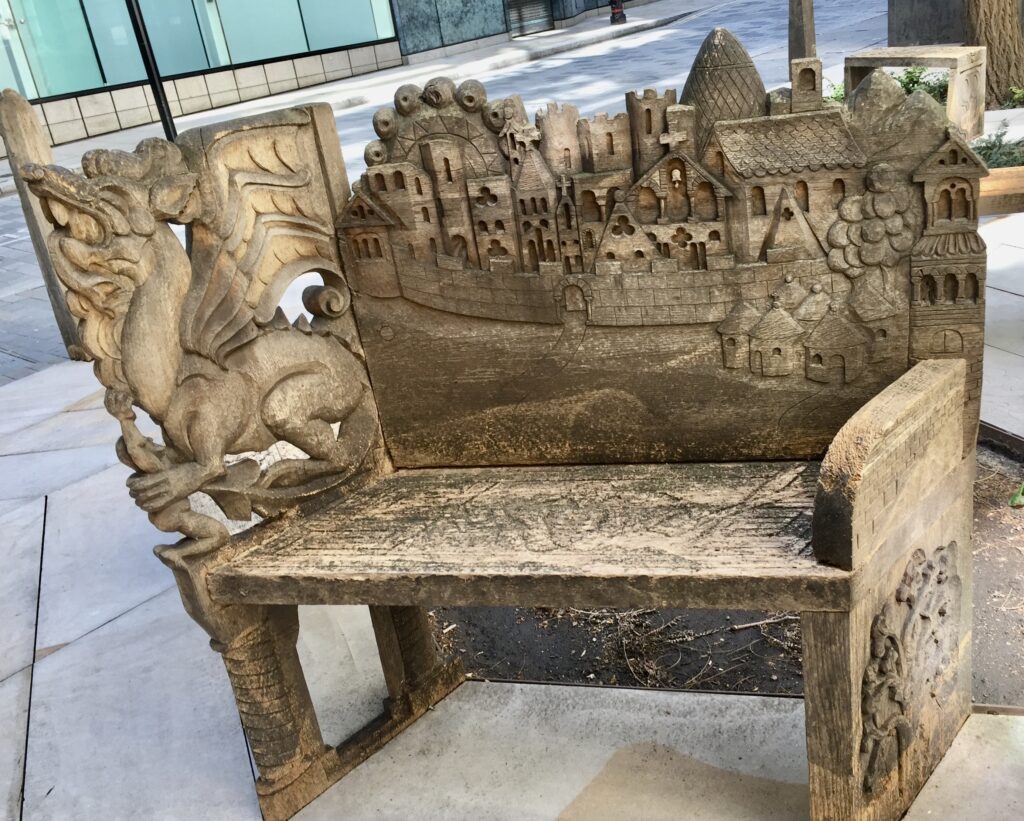
I then headed north to walk around the London Wall Place area, which is looking really nice now that development has been completed. My first stop was St Alphage Gardens (EC2Y 5DE) …
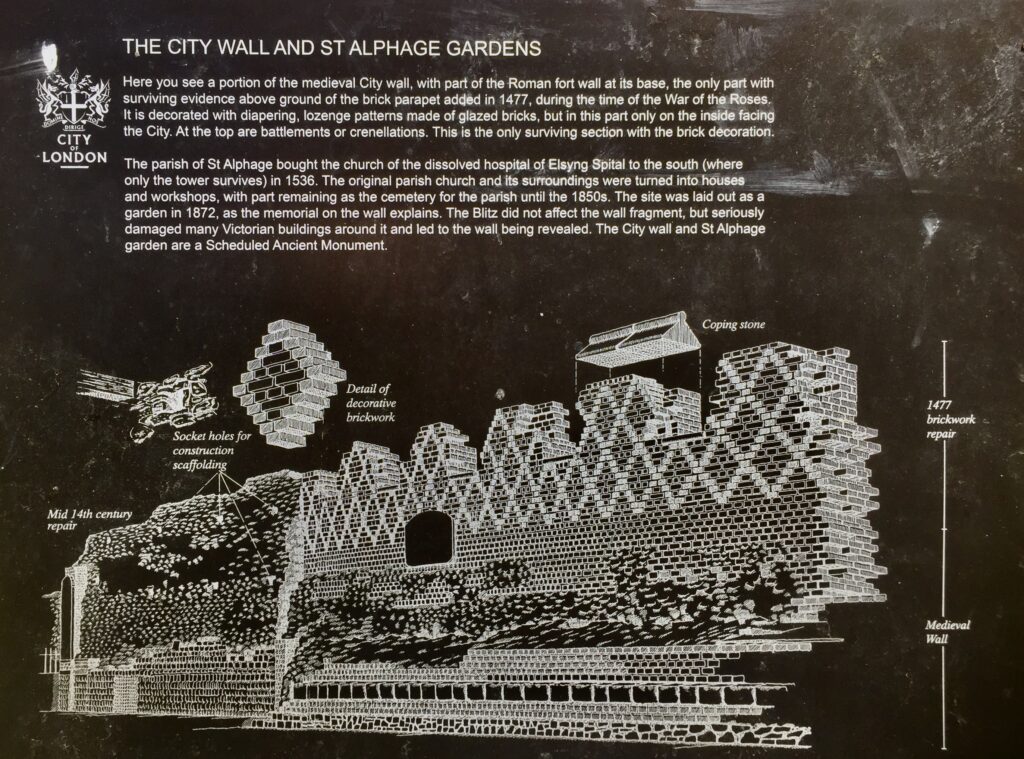
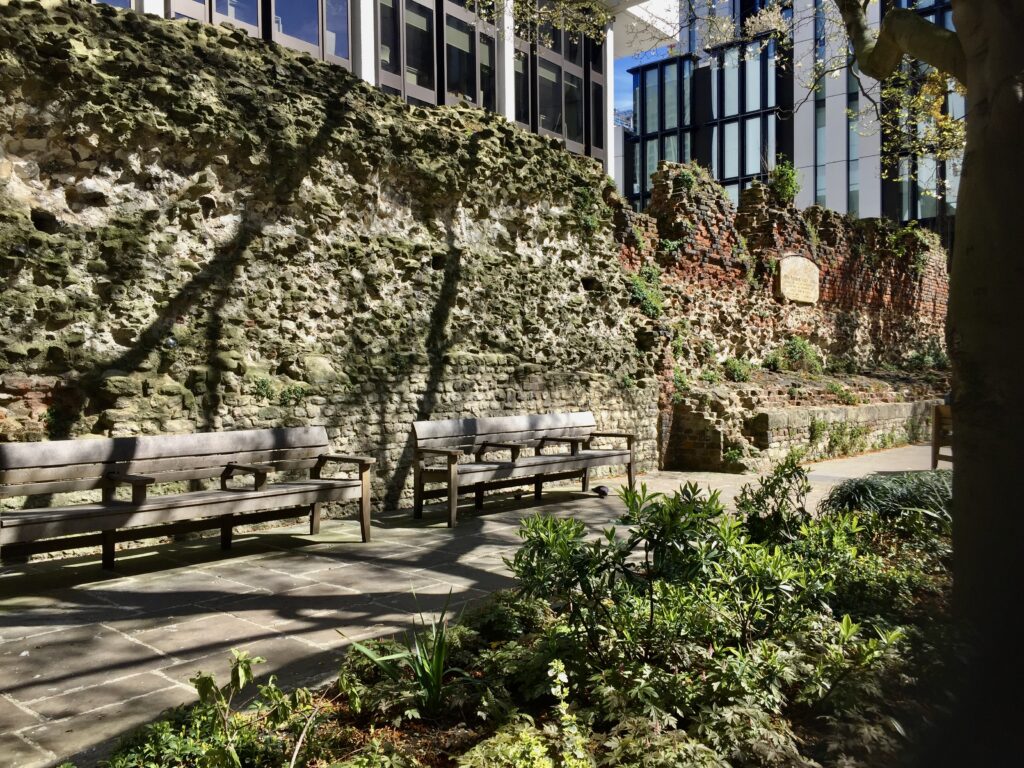
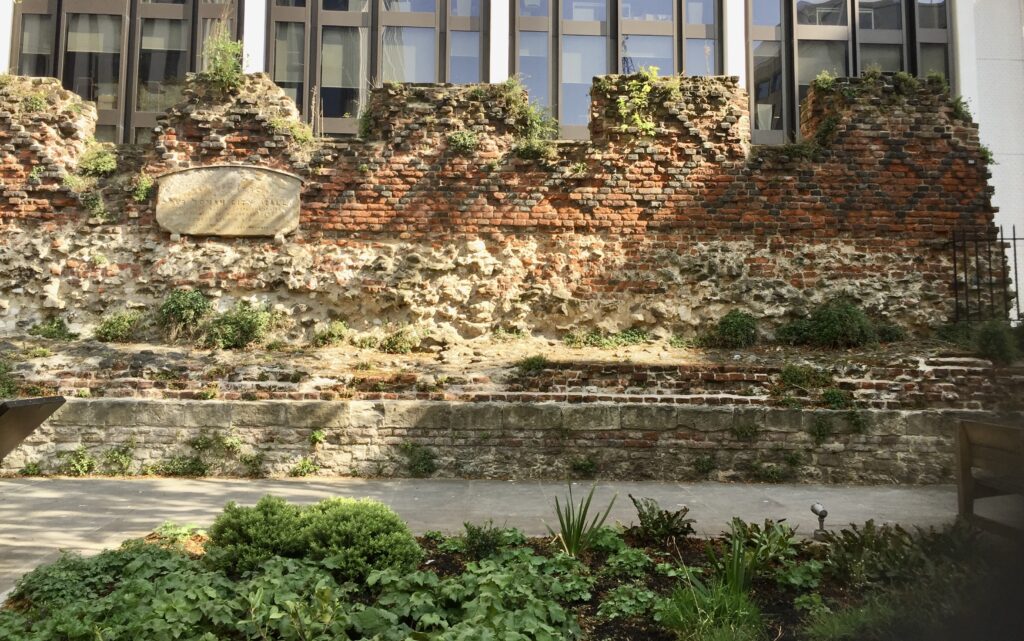
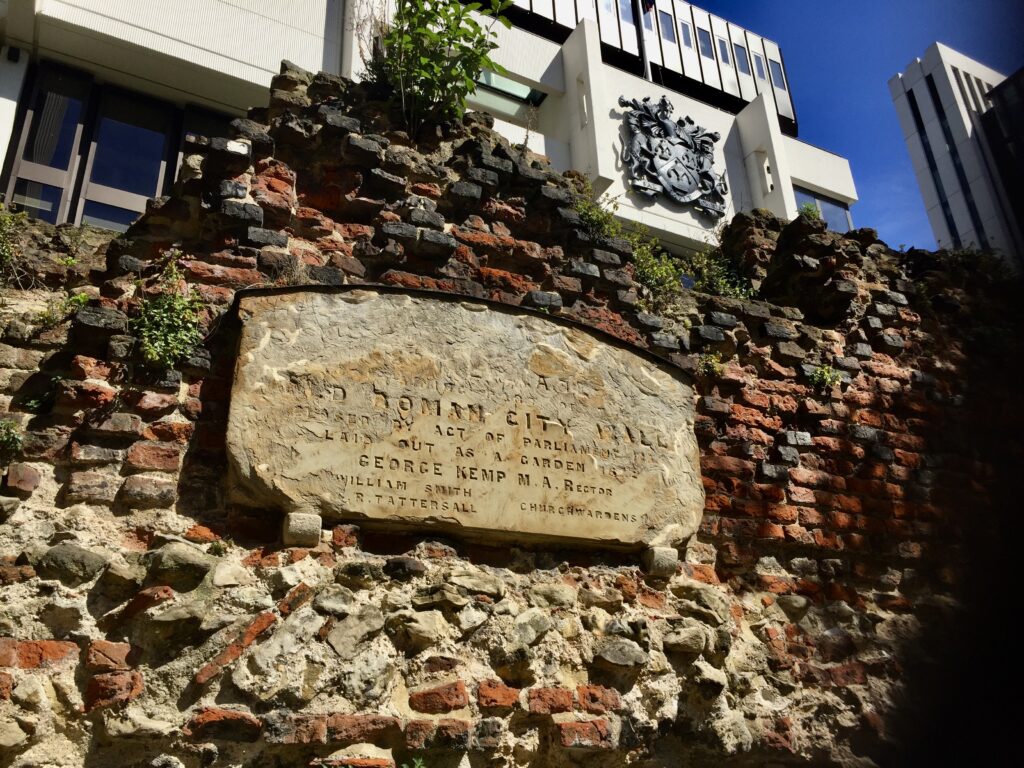
You can see the north side of the wall from the Salters’ Hall garden – now usually open to the public (EC2Y 5DE) …
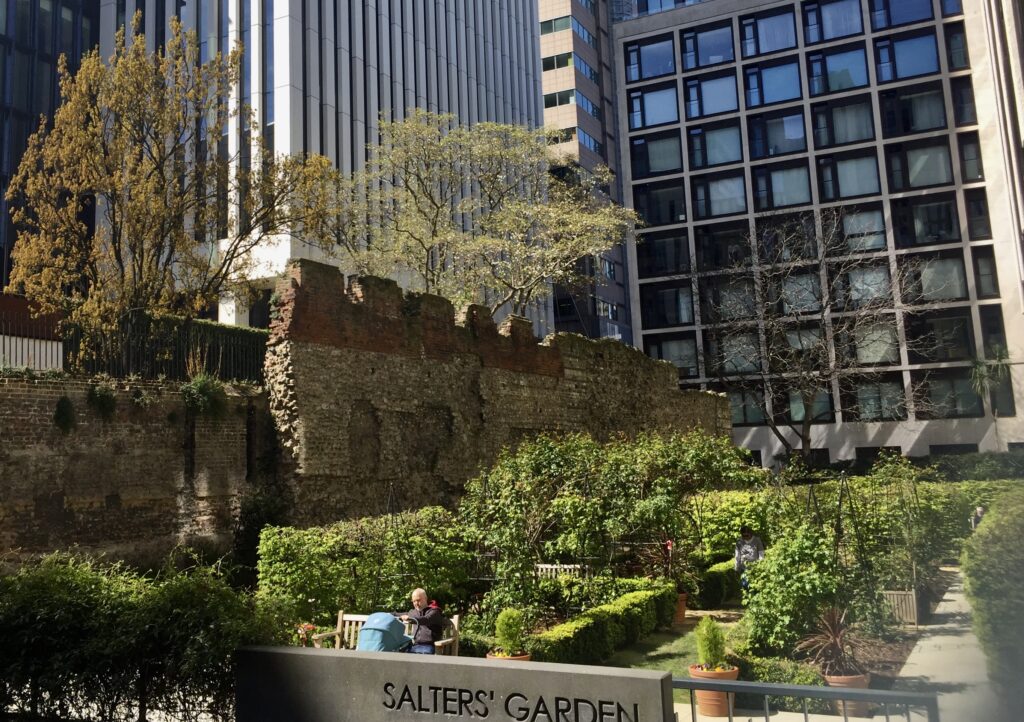
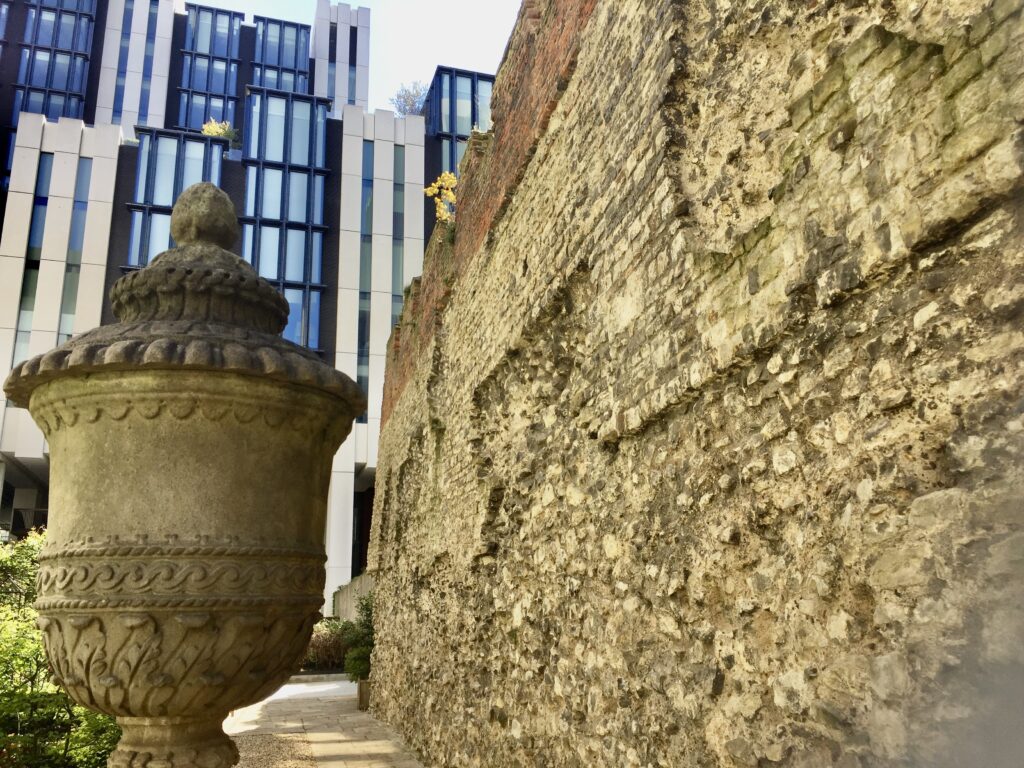
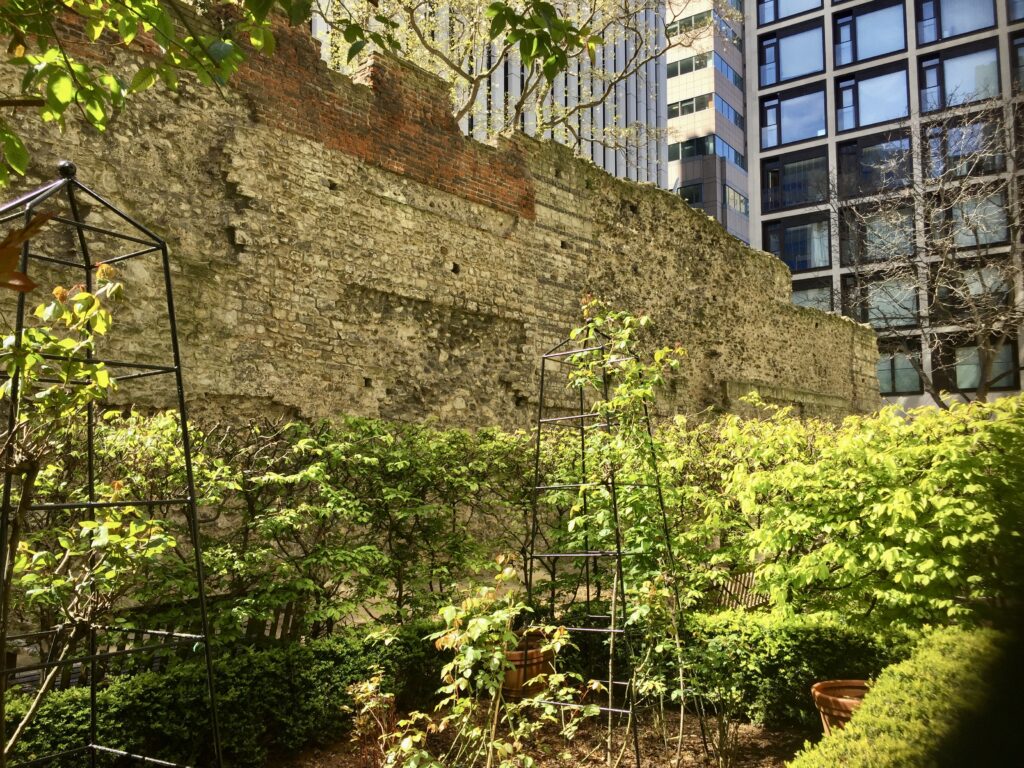
The St Alphage parish bought the church of the dissolved hospital of St Elsyng Spital in 1536. The tower is still there today just to the south of the wall …
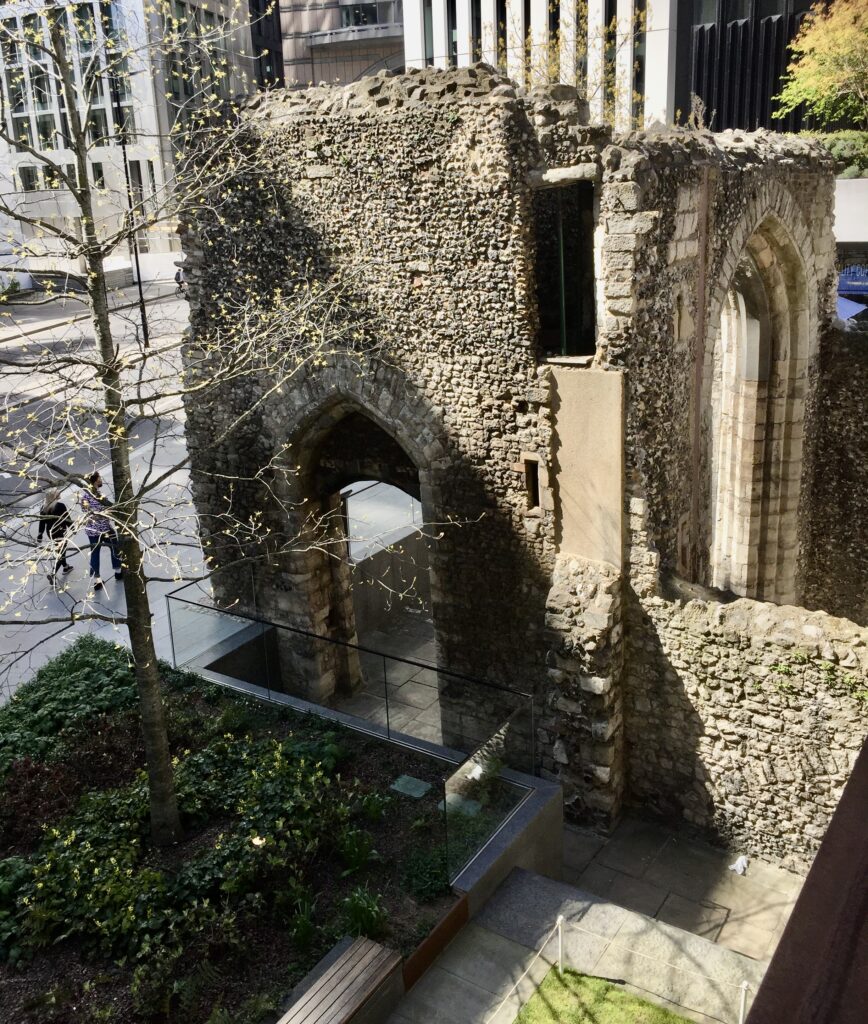
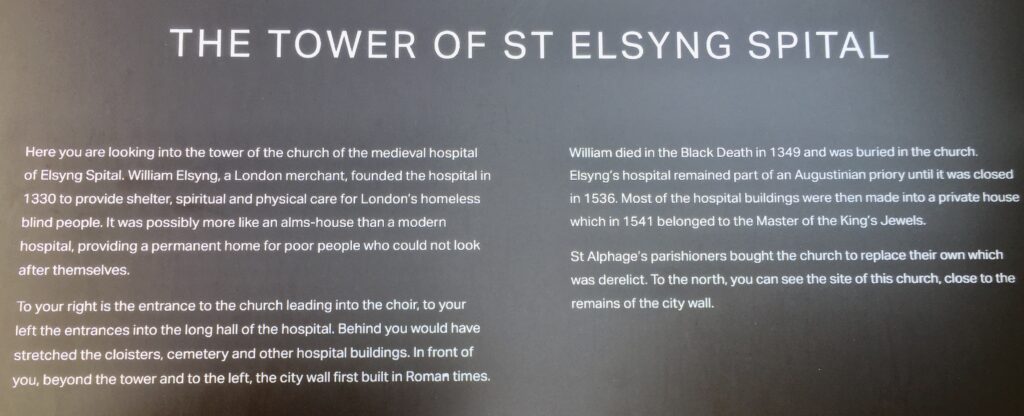
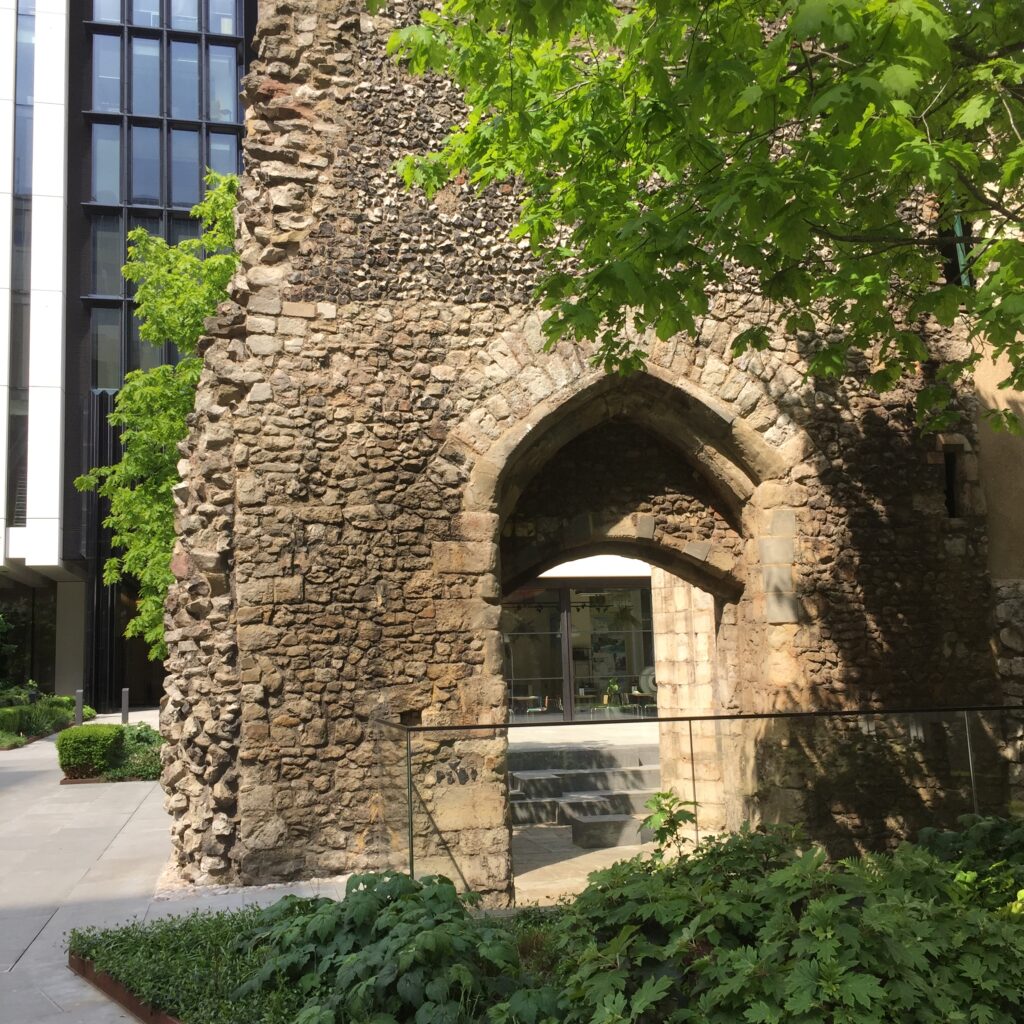
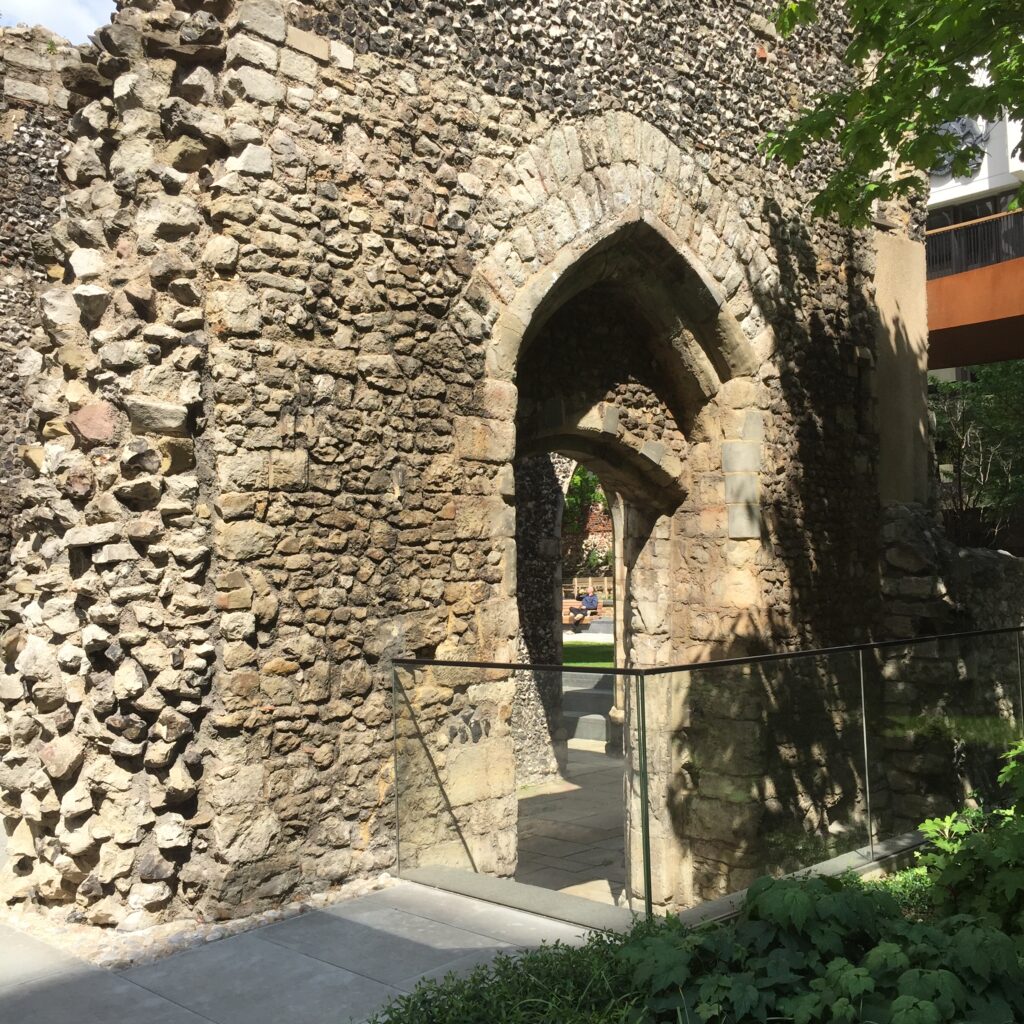
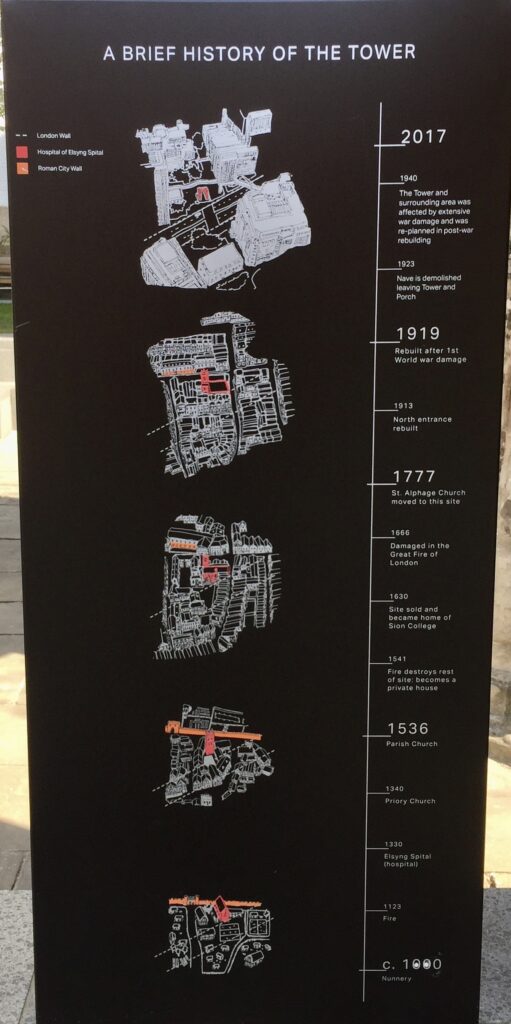
From London Wall to lush green wall at Number 2 London Wall Place (EC2Y 5AU) …
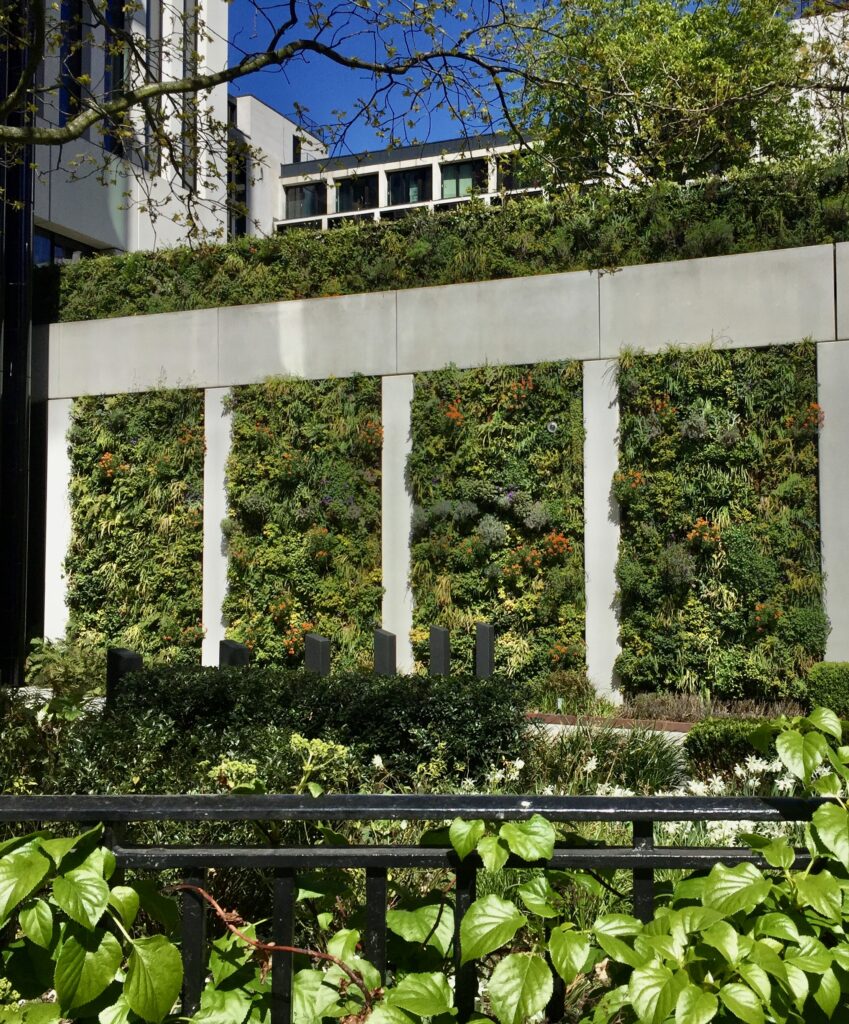
And now a mystery. In the churchyard of St Mary Aldermary are two tombstones several feet apart (EC4M 9BW). One denotes the resting place of ‘Mary, wife of William Couthit. Entered into rest 29th January 1775 aged 43 years.’ William is also there – he died on 18th February 1808 aged 63. Beneath the William and Mary inscriptions are the words ‘Also Elizabeth Couthit …’ with the rest tantalisingly buried.
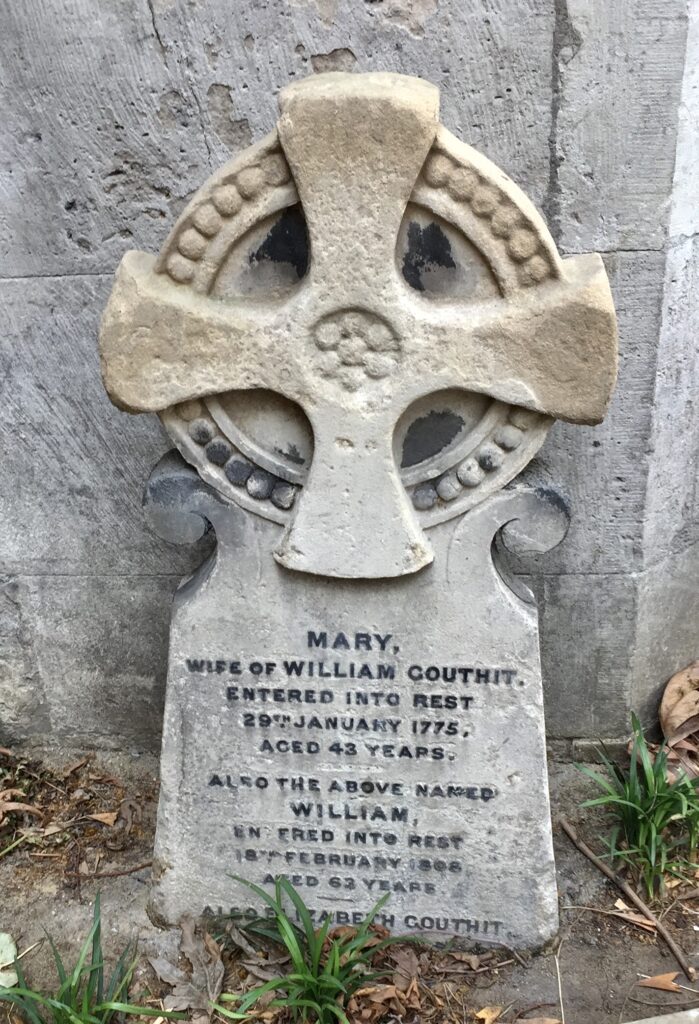
I have checked out this stone with a really useful resource, the audit of ‘Churchyard Inscriptions’ in City churchyards carried out by a man called Percy C. Rushen in 1910. He describes the stone exactly as it is now but records no date of death for Elizabeth. Here’s the actual page from his audit – the Couthits are recorded about half way down …
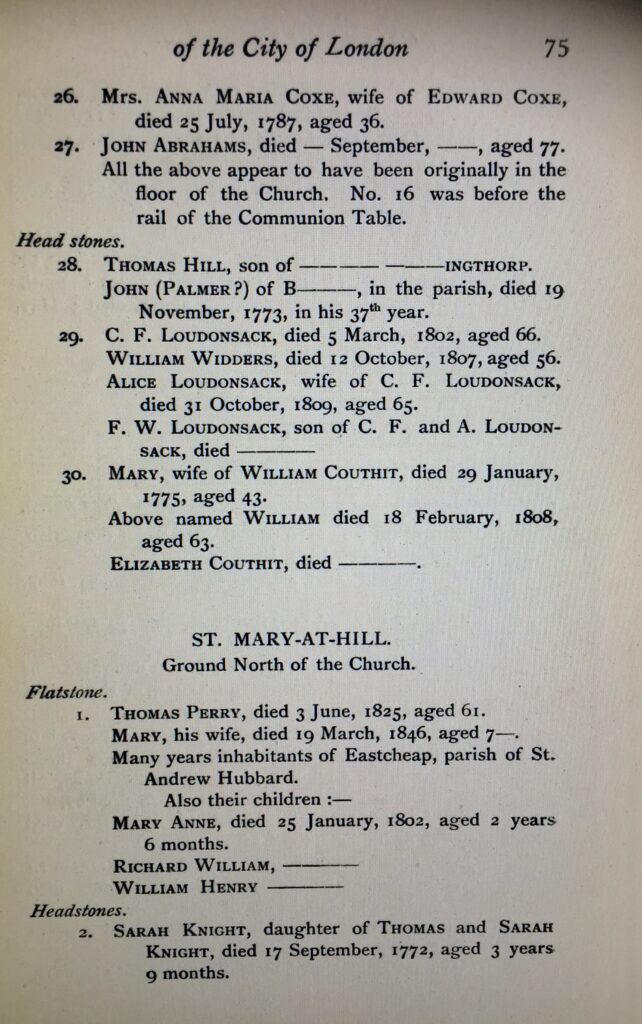
Now the mystery.
This is the other stone …
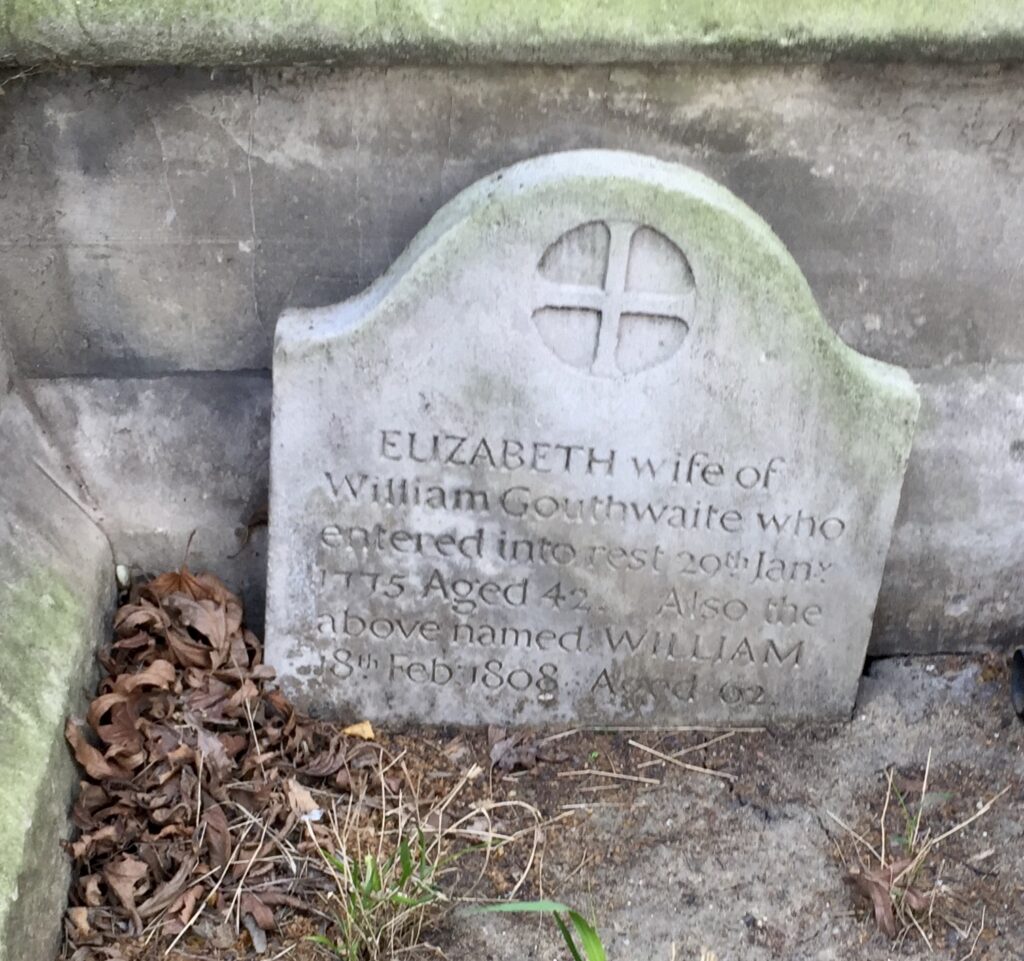
It claims to commemorate ELIZABETH, the wife of William COUTHWAITE, (so at first glance this is a different couple) and also William himself. However, she died on the same day as Mary Couthit (29th January 1775) and her William the same day as William Couthit (18th February 1808). As well as these anomalies, the ages at date of death on the second stone differ by one year. Elizabeth is shown as 42 at death rather than 43 and William as 62 instead of 63. Crucially, this stone does not appear in Rushen’s audit and he was obviously very meticulous.
My theory is that, many years after the Coutits had died, their descendants (now called Couthwaite) had traced their ancestors. Not realising for some reason that there was already a memorial, they erected another one with incorrect information.
In 1910 there were only three headstones and there are only three today. As we know, the Coutit one is still in the churchyard, and the other survivor is the one for Loudonsack and Widders …
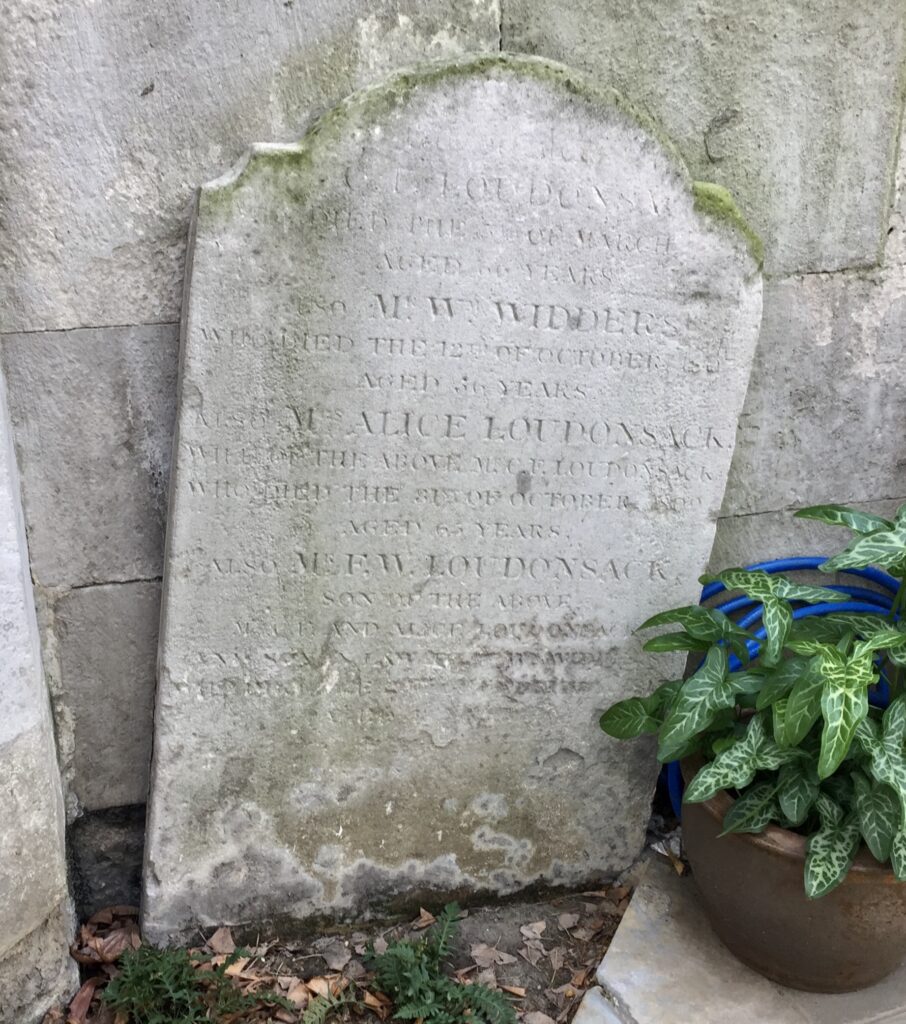
The third stone still there is so weathered I couldn’t read it …
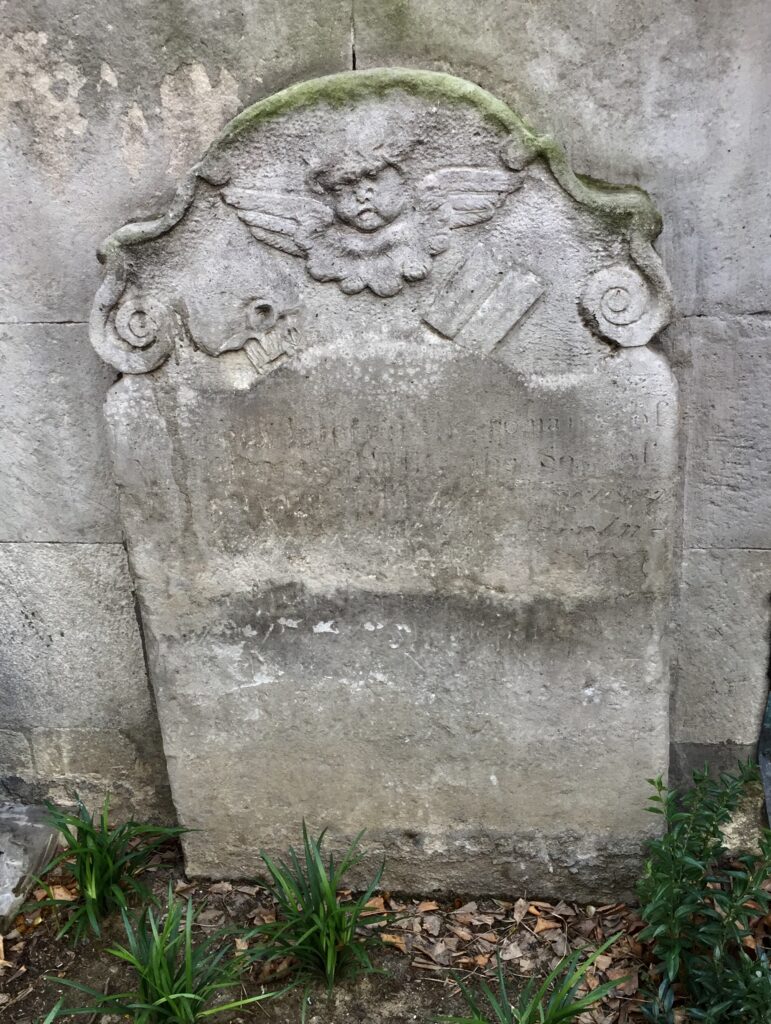
The last two words on the top line seem to be ‘…remains of …’ which would rule it out being the Thomas Hill stone mentioned in the audit.
Rushen listed 27 flatstones and there are nine in the churchyard now (all on the path leading to the door) …
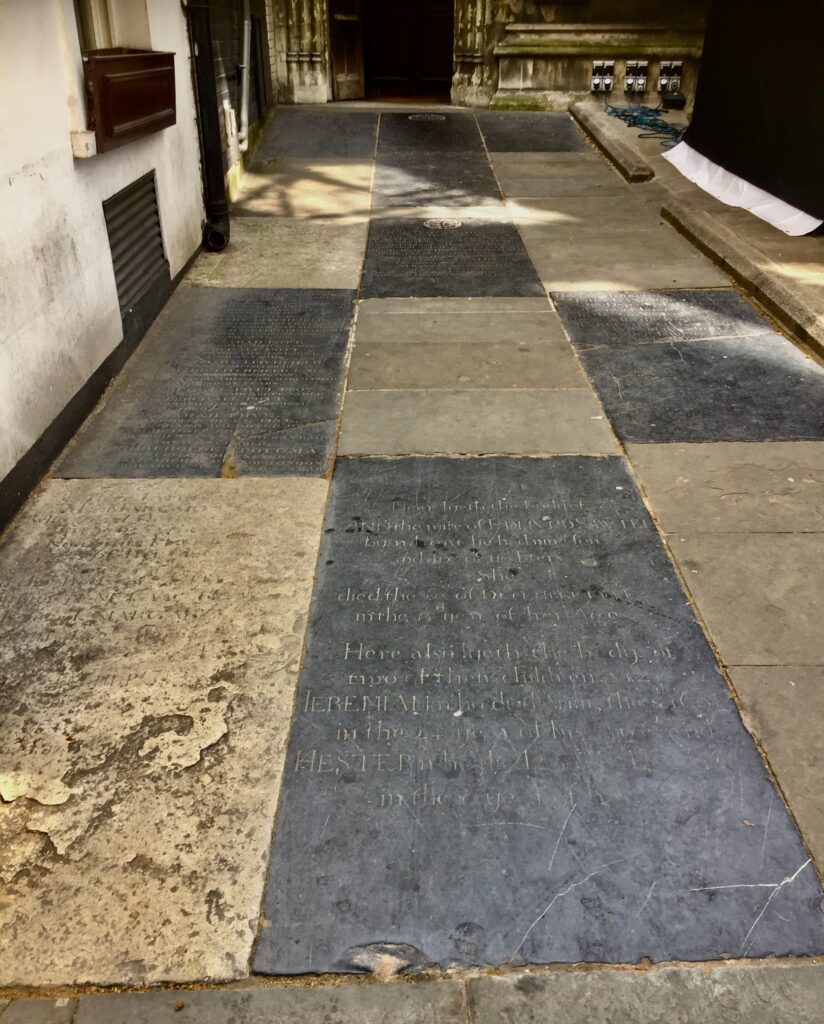
One gives a remarkably detailed time of death along with Mrs Schneider’s exact age …
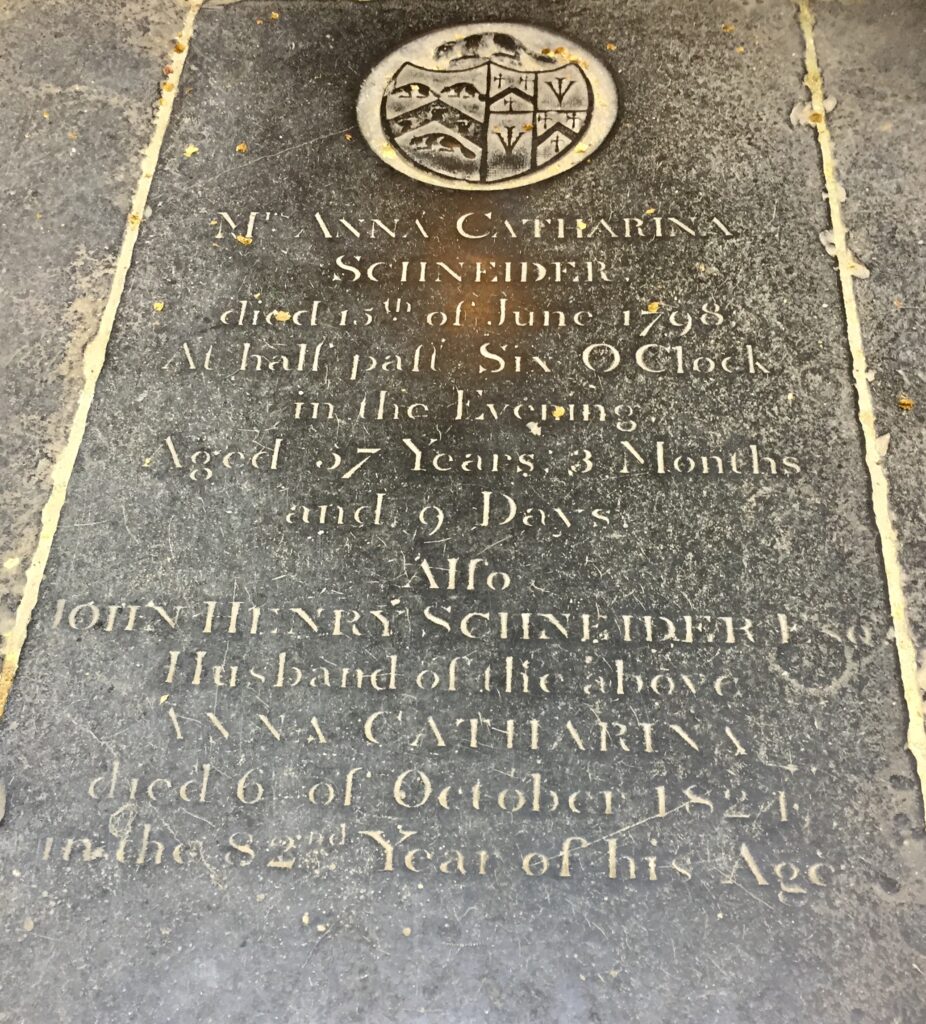
I have done some research about this stone and the people it commemorates in an earlier blog entitled Some of my favourite tombs, gravestones and memorials.
If you get the chance do visit the church. A former medieval church, largely destroyed in the Great Fire of 1666, it was rebuilt in 1679-82 by Sir Christopher Wren’s master craftsmen. It is the only surviving late 17th century Gothic church in the City of London and is especially notable for its unique plaster vaulting. Here’s what you see when you look up …
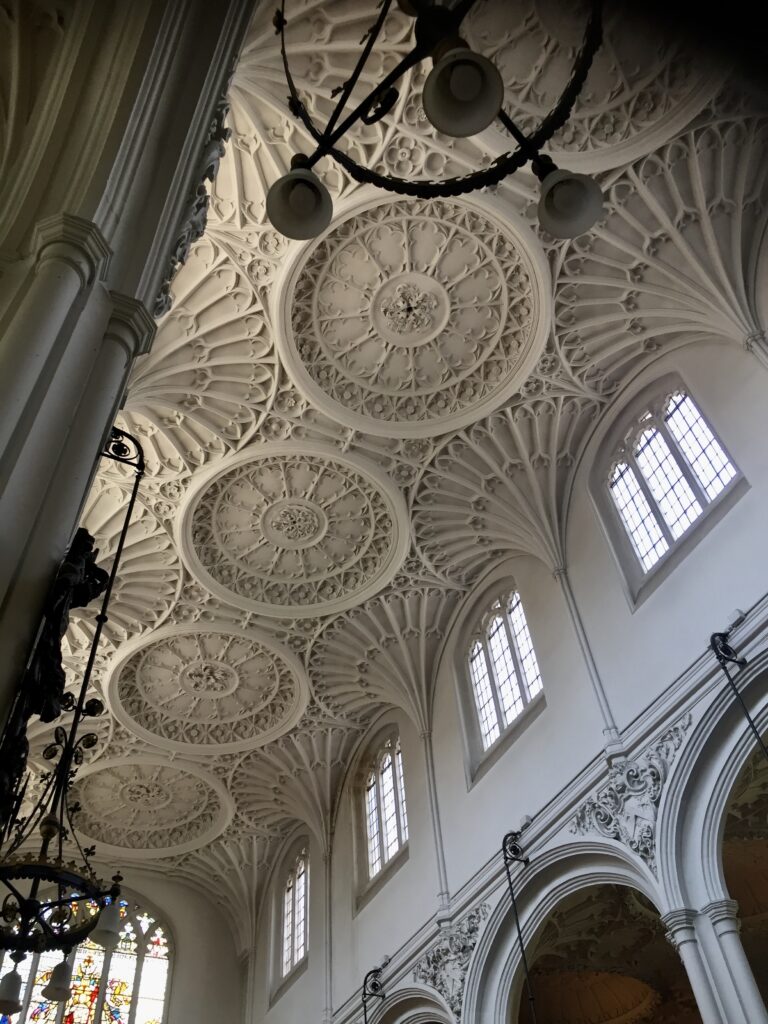
… and finally, a lady duck update.
Last week I published this picture of Ms Duck being pursued by two enthusiastic suitors …

I saw this scene a few days later and it seem she has shaken one of them off!
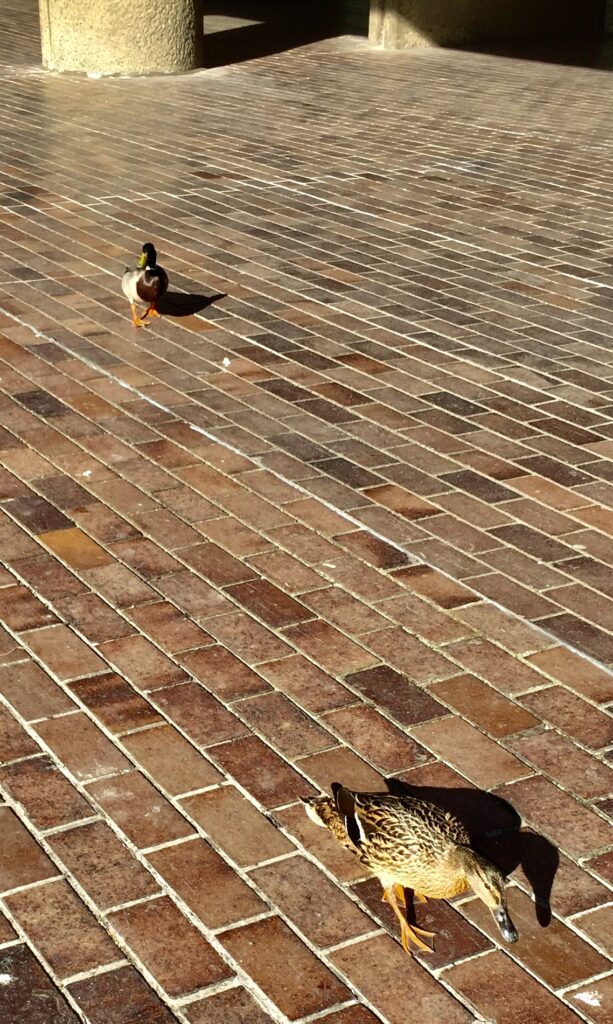
If you would like to follow me on Instagram here is the link …

